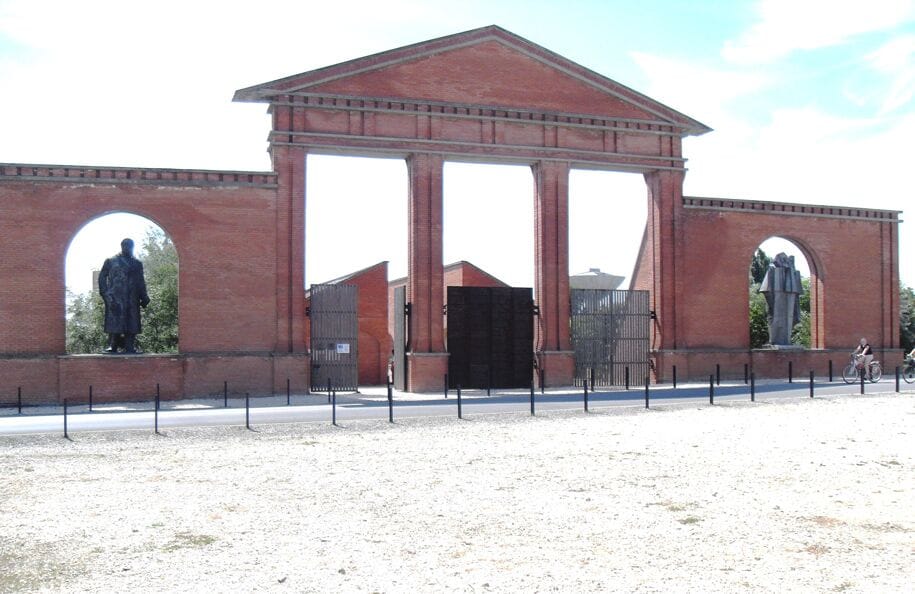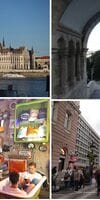Budapest is a city with a rich history, some sections of which began to form in ancient times. For this reason, modern Budapest is full of exciting and beautiful sights, which include both historical and architectural, reflecting the history of the area, as well as natural and religious sights.
No wonder Budapest is also called the "Pearl of the Danube" and even, in a broader sense, the Central and Eastern Europe.
Budapest is often described as two cities in one. It is a city with two seemingly so different from each other, but at the same time so similar and divided during the history some fate areas with very different landscapes, each of which is unique and good in its own way.
It's Buda and pest, and Obuda (part of the modern part of Buda), which previously were really separate cities, but in 1873, after the merger, are parts of the city of Budapest.
Buda (Buda), in a broad sense applies to the whole Western part of modern Budapest and pest County (Pest), respectively, to the Eastern part of Budapest. Each part of Budapest has as its relief - Buda is mostly a hilly and green landscape, and pest is flat, and its own unique attractions: Buda is a historical castle, monuments, narrow streets; in the pest - elegant buildings, mostly 19th century, a variety of shops, bars and restaurants.
The Sights Of Budapest
General attractions
Which to some extent can be attributed to both Pest and Buda.
The embankments and bridges (the Danube)
Embankments of Budapest runs along the entire city from both the pest and Buda side.
Across the Danube is spanned by bridges connecting the two parts of Budapest - pest, and I Will.
In the centre of Budapest, where the main touristic center and the main sights across the river Danube are six bridges, each beautiful in its own way. For each of these bridges runs the transport, including both public and equipped with pedestrian areas on both sides of each bridge. Read more about the bridges and embankments of Budapest...
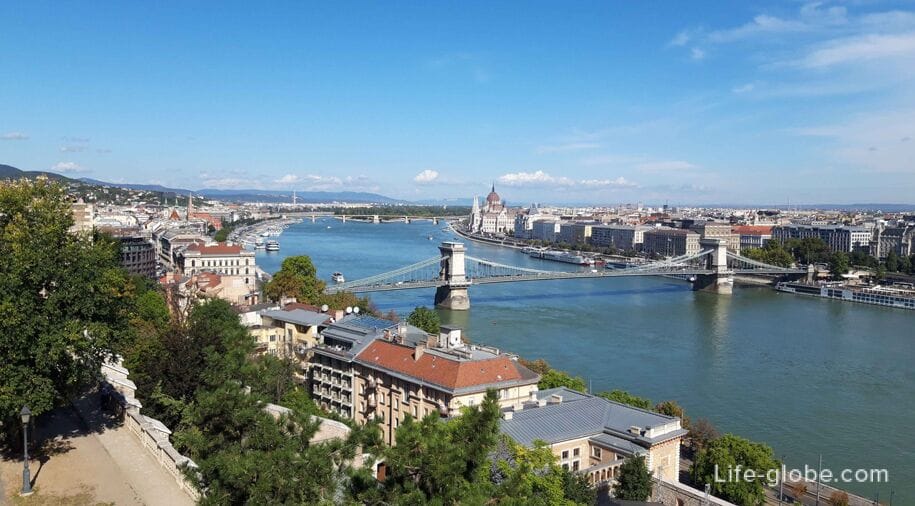
Danube cruising cruise boats where you can take a boat trip. Is hour sightseeing cruises with welcome drink, a 3-hour sightseeing walk, there are evening included champagne and(or) dinner, live music, etc. Information on cruises can be found on the place, or buy a cruise in advance. Link to cruises and other trips in Budapest...

In addition to full cruises on the Danube you can take a city tour in tour bus-amphibian (RiverRide Budapest), who takes a walk to the sights of Budapest by road (landmarks on the pest side), and water (the Danube). Tickets can be purchased on the website.

The Baths Of Budapest
Budapest is famous for its thermal baths, which the city has more than ten.
The baths are all different, some will have fun with the whole family (with children), because in these baths, in addition to thermal baths, there are also swimming pools (open and closed), including baby and water slides.
Pest is famous for the famous Szechenyi baths (Szechenyi fürdő), and the Buda baths such as gellért, Rudas, király, lukács, Veli-Bay, etc. read More about all the baths in Budapest...
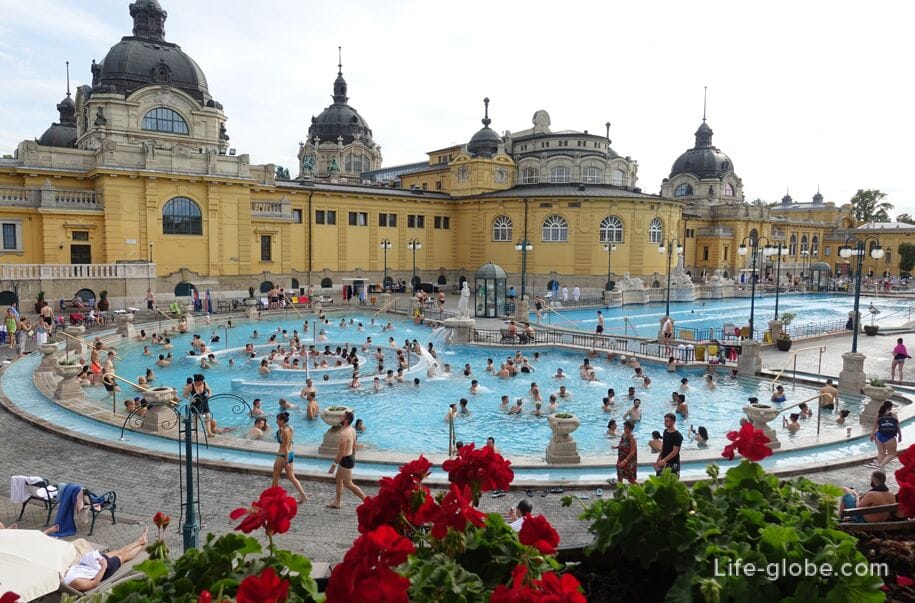
Margaret Island
Margaret island (Margitsziget / Margit-sziget) - literally an island located on the Danube in Budapest.
Currently, the Margaret island is a leisure Park for the whole family, with cafes and restaurants, Seating areas, green areas with paths and alleys for walking, playgrounds and rides, and historical landmarks, a fountain, Japanese garden, water tower and mini zoo. Read more about Margaret island...
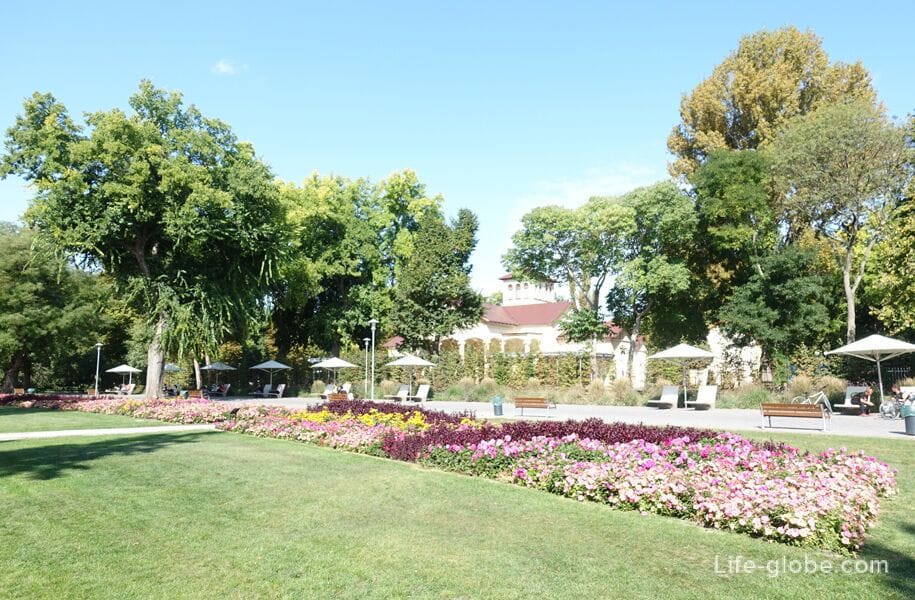
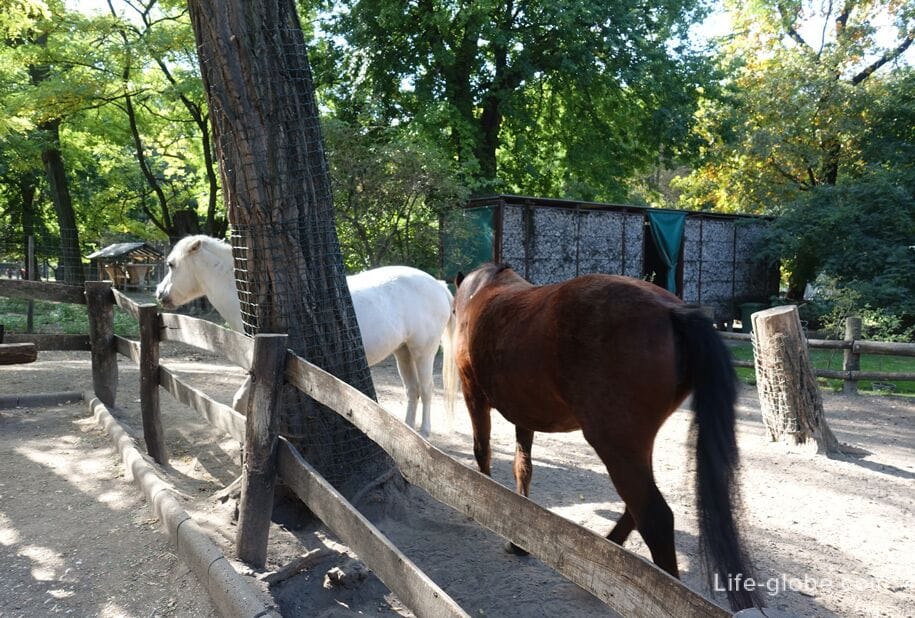
Sights Of The Pest Side
The Hungarian Parliament building and Kossuth square
The Hungarian Parliament building (Orszaghaz - Orszaghaz) is among the most beautiful buildings of the parliaments of the world and the most beautiful buildings of Budapest.
The construction of the building was carried out in the period from 1885 to the years 1902-04.
The Western facade of the Parliament building runs parallel to the Danube, and the other three (East, North and South) faces the Kossuth square.
In addition to the inspection of the facades of the houses of Parliament, perhaps visiting some of the internal spaces in the tour group. Read more about Hungarian Parliament building...
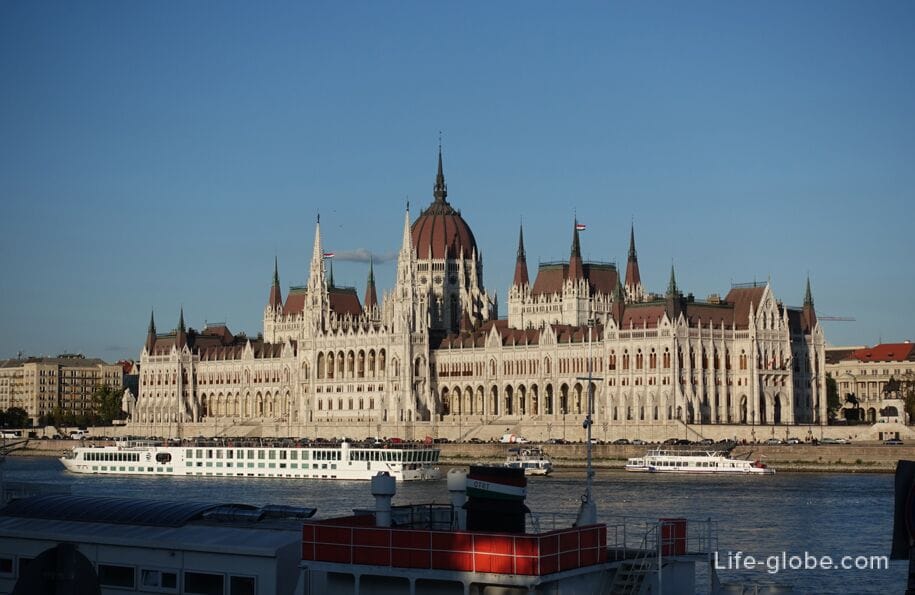
Area of Lajos Kossuth or just the Kossuth square (Kossuth Lajos ter) is one of the most famous and visited squares in Budapest.
In the square are historical buildings of Hungary, as well as memorials and monuments, including, in addition to the houses of Parliament, Palace of Justice, the building of the Ministry of agriculture, chocolate Museum and St. read More about Kossuth square...
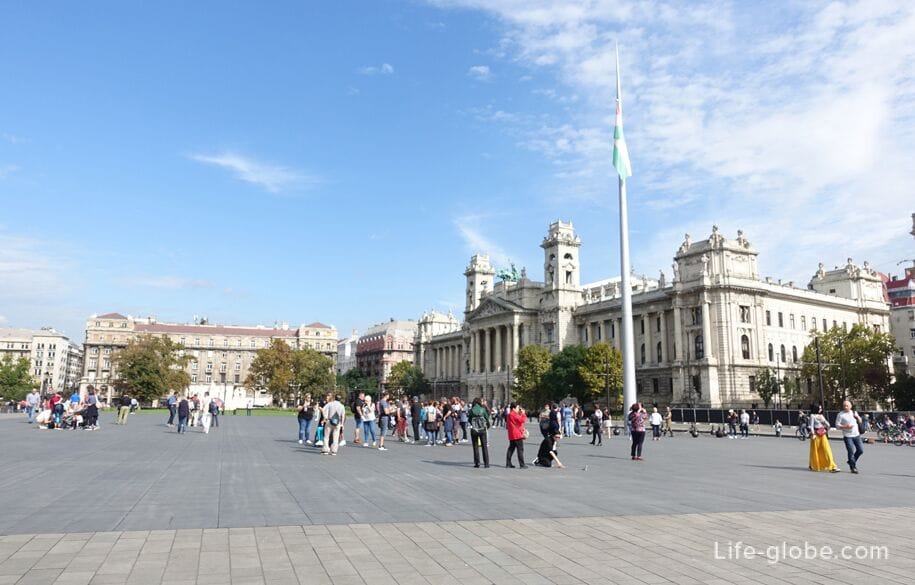
Sculpture of "Shoes on the Danube promenade"
Sculpture of "Shoes on the Danube promenade" is a memorial erected in memory of the victims of Holocaust, consisting of a cast iron Shoe sample shoes 1940-ies and is dedicated to the memory of those who were shot on the banks of the Danube by the Hungarian Nazis.
The memorial was opened in 2005 to mark the 60th anniversary of the Holocaust. Read more about the monument...
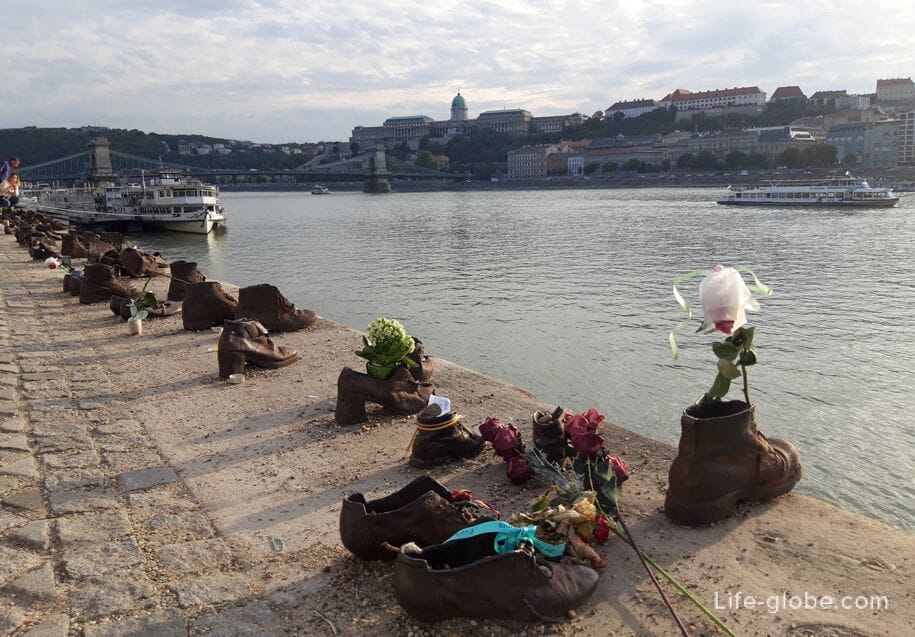
The Gresham Palace
The Gresham Palace (Gresham-palota) is one of the most recognizable buildings in Budapest.
The building of the Palace was built in the early 20th century in the art Nouveau style as an office-residential center for senior employees of Gresham.
Currently, the walls of the historic Gresham Palace is one of luxury Budapest hotels - 5-star Four Seasons Hotel Gresham Palace Budapest, many of the rooms overlooking the Danube river, scenic hill, Buda castle and the gellért hill on the Buda side. Read more about Gresham Palace...
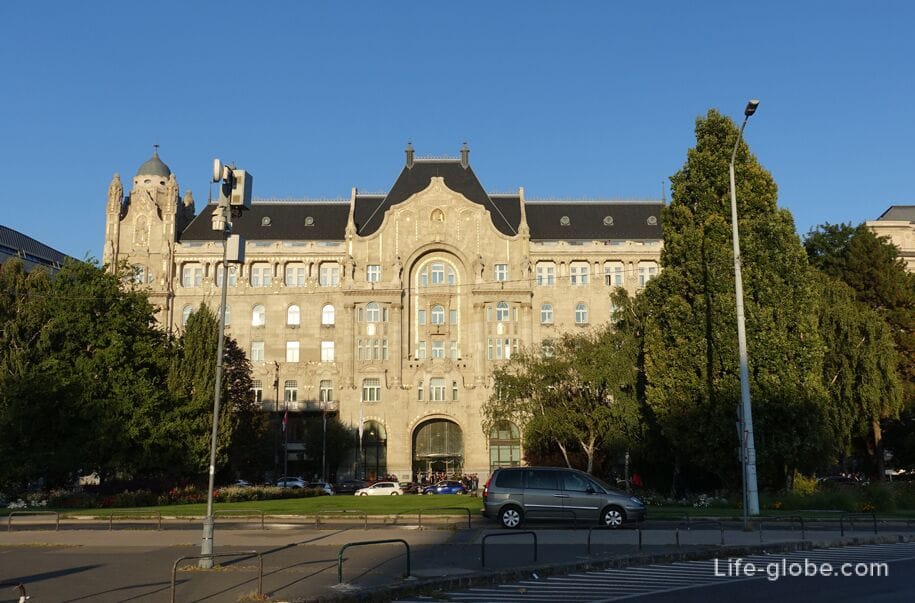
Vigado concert hall
Pesti Vigado, can also be known as Redoubt (Vigado, Pesti Vigado, Redoute), is the second largest concert hall in Budapest.
The building was erected in 1865.
In the walls of the Vigado, in addition to concerts and other events, there are also exhibition halls, a restaurant and café, there is a panoramic terrace on the 6th floor which offers views of the Danube, the Pest embankment and the old Buda side. Read more about Vigado...
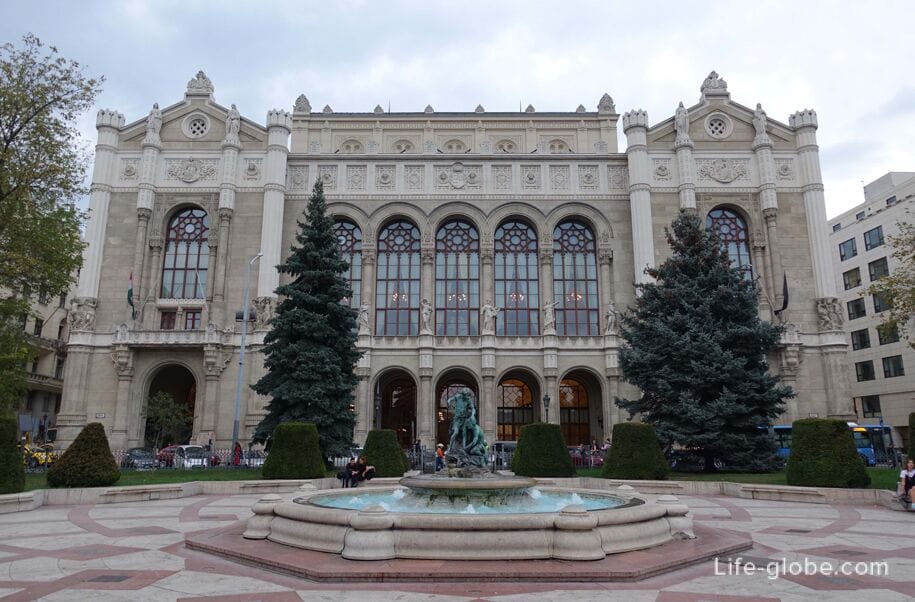
Liberty Square
Freedom square (Szabadsag ter) - a public space - one of the main and biggest squares in Budapest.
Liberty square has a rectangular shape, and its center is a square with a fountain, Seating areas, pedestrian areas and children's Playground.
Also on the square are monuments and monuments, and around the perimeter of the towering historical buildings, including the monument to the Victims of the German occupation, the monument to the Soviet soldiers, the building of the Hungarian national Bank, the former home of the Budapest stock exchange and the U.S. Embassy. Read more about Liberty square...

The Area Of Elizabeth
The area of Elizabeth or Erzsebet square (Erzsebet ter) is one of the most visited areas of pest.
The center of the square forms a square with a fountain Danubius (Danubius-kut) is the largest green area in the historic pest.
Also on the square are cafes, places to stay and the Ferris wheel, one of the lookouts in Budapest.

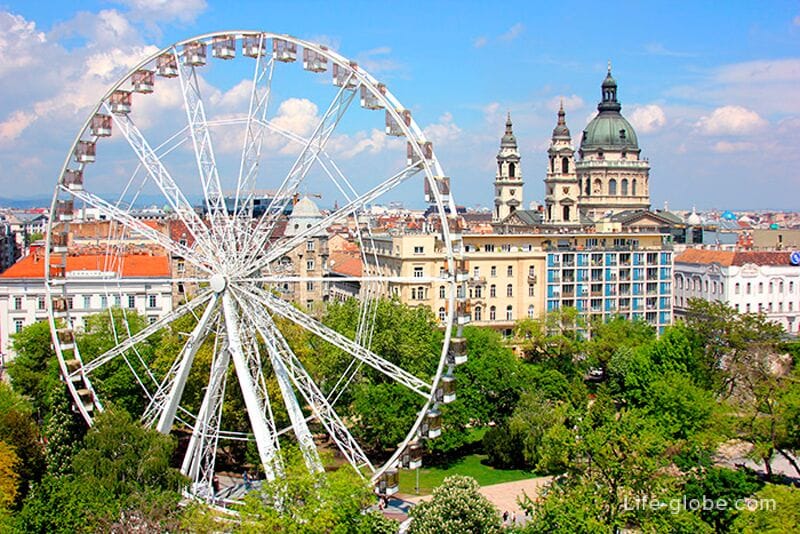
St. Stephen's Basilica
The Basilica of St. Stephen, or St. Stephen's Basilica (Szent Istvan-bazilika) is a Roman Catholic Basilica (Church), is the most important Church building in Hungary, one of the important spiritual and tourist attractions of the country.
The Basilica is built in the neoclassical architectural style. In terms of an equilateral cross. The main facade of the Basilica overlooks the homonymous square, St. Stephen (Szent Istvan ter 1), where concerts, festivals and other public events.
On the dome of the Basilica there is a circular open area, giving a 360° view of Budapest. Read more about Basilica of St. Stephen...


Square Jozsef Nador
Square, square Jozsef Nador (Palatine, Jozsef nador ter / Jozsef nador square) is a popular, although located in the historic centre of pest.
In the middle ages the territory of present square was outside of pest, and was built on the ruins of Roman fortifications and surrounded by city walls in the 12th century.
The square is notable for the statue in behalf of the Palatine józsef and graceful sculptural fountain. The perimeter of the square is decorated with historical buildings.
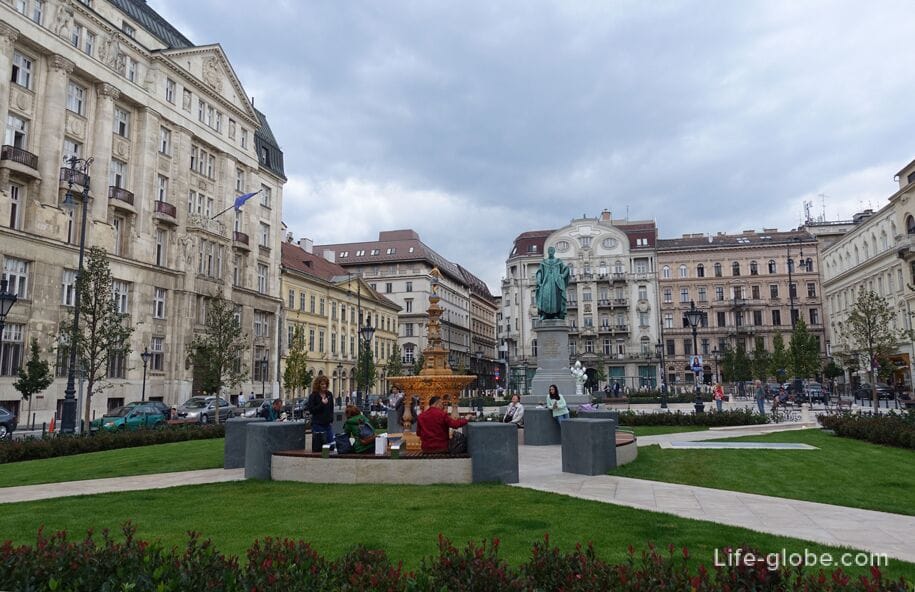
Paris courtyard
So-called "Paris courtyard" (Moulin-Rouge) is a historic building that originally served as the headquarters of the Central savings Bank and built in 1817 by Baron józsef plan mikhayla Pollack. This building was one of the first modern office buildings in Hungary.
The courtyard on the ground floor is a Parisian court, which, in turn, is the only remaining yard of its kind in Budapest in the early 20th century.
Currently, the walls of the building are a café and restaurant, a business centre and 5 star hotel Parisi Udvar Hotel Budapest.
Address: Ferenciek tere 10.
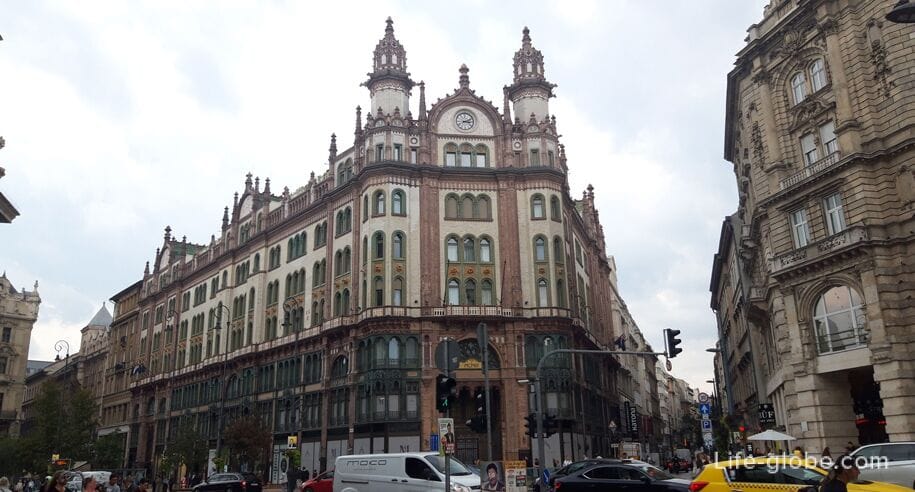

Palaces Clotilde
Palaces Clotilde (Klotild palotak) constitute the two great typical British (neo-Baroque and eclecticism) buildings that are near each other - a mirror opposite buildings separated by a street make contact Lajos (Kossuth Lajos u).
The palaces form a symbolic gate leading to the Erzsebet bridge.
On the ground floor of buildings there are cafes, shops, galleries, offices and upstairs apartments.
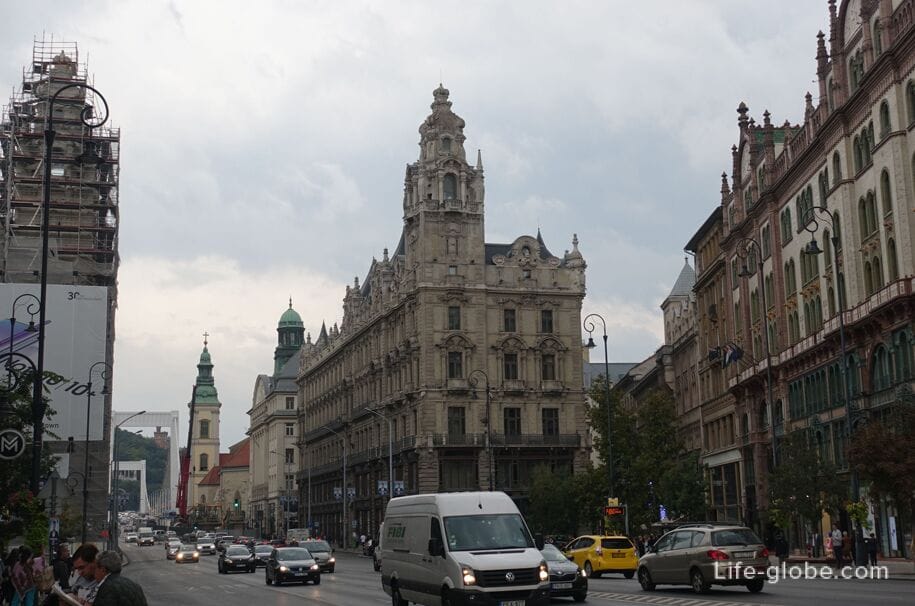
House Gerbo
Garbo house (Gerbeaud-haz) was built in 1858-1862 and is built in a modern style, located in Piazza Verasmart.
Currently, the first floor is the famous Cafe "Garbo" (Cafe Gerbeaud) - one of the biggest and best-known coffee-house in Europe. Read more about square Verasmart...
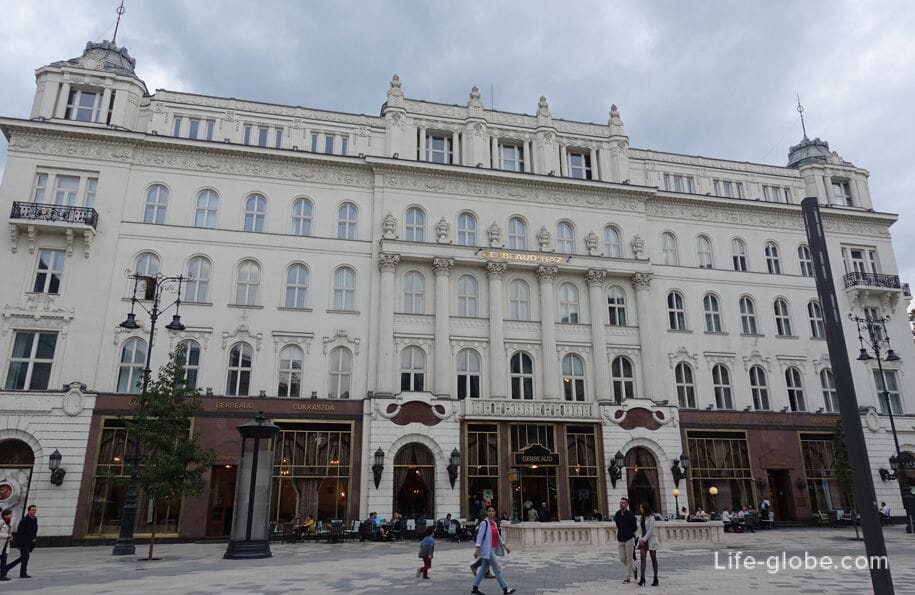
Váci Street
Vaci street (Vaci utca) is one of the major tourist attractions and shopping streets of Budapest.
Stretches the váci street parallel to the embankment of the pest side, from the square Pevam (Fővam ter), which is near the Central market of Budapest (near the Liberty bridge) to the vörösmarty square (Vörösmarty ter).
Currently, the váci street is a pedestrian artery of the city, as a lateral (adjacent) street.
The street is just over a kilometer. Along the street are located buildings, some of which are of historical value, the part attracted to their facades decorated with tiles and decor.
On the first floors of buildings along Vaci street there are cafes, restaurants and eateries with outdoor Seating, shops, souvenir shops and boutiques. Read more about Vaci street...
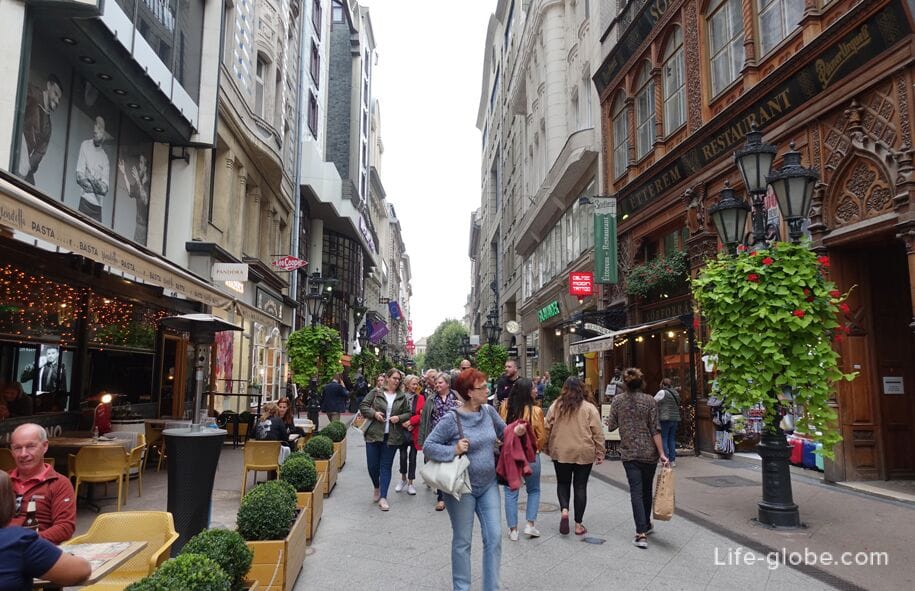
Central market
The Central market in Budapest, also known as the Great market hall / Central market hall or just a Large hall (Központi Vasarcsarnok / Nagy Vasarcsarnok / Fővam teri központi vasarcsarnok) - the largest indoor market of Budapest.
The market was built in 1896 and opened in 1897.
The inner part of the Central market of Budapest is a large shopping hall on the ground floor.
On the second floor of metal structures to sell food products, but also a public catering area, attracting a large number of visitors. Read more about the Central market...

The Andrassy Avenue and the Opera house
Andrassy Avenue (Andrassy utca) is a main Avenue and one of the main streets of Budapest.
The Avenue was formed in the period between 1870 - 1876 and named in 1885 after the main supporter of the plan, Prime Minister Gyula Andrassy.
The length of andrássy Avenue is about 2.4 kilometers, it stretches from the Heroes ' square (city Park Városliget-city Park) to the intersection with Bajcsy-Zsilinszky, where smoothly flows into the Jozsef Attila street.
Along the andrássy Avenue are a significant historic buildings, including the Museum of Terror and Hungarian state Opera house (Magyar Allami Operahaz), is a national monument of the 19th century. Learn more about Andrassy Avenue...
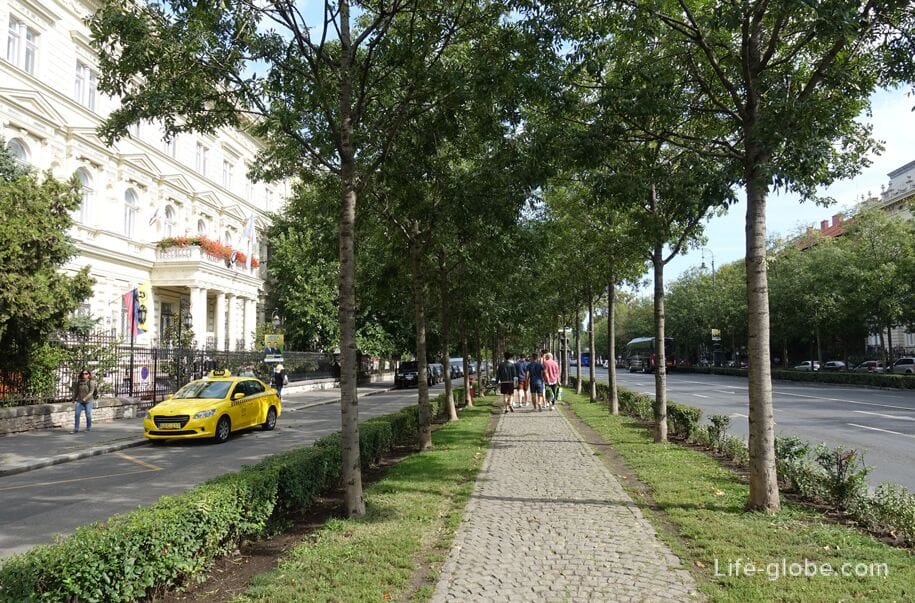
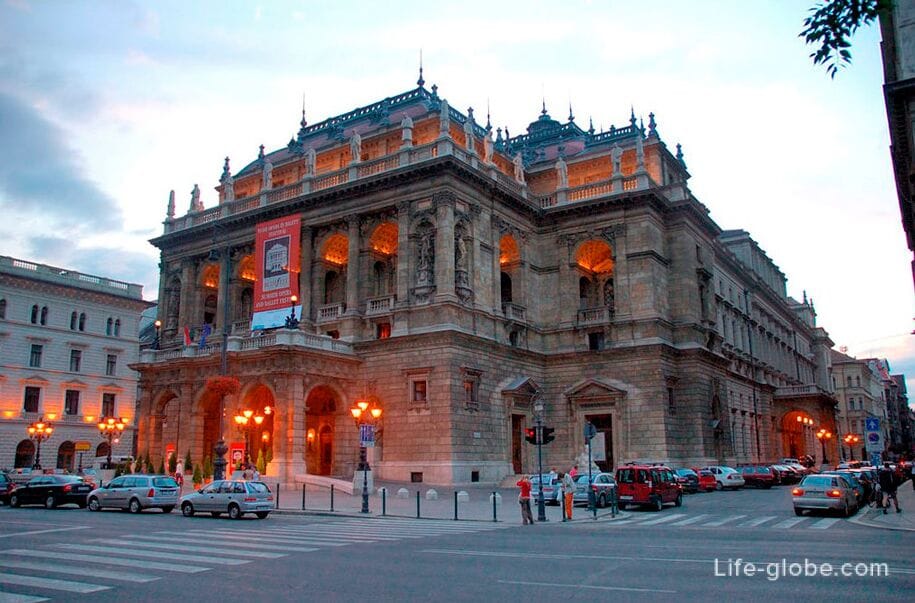
"Pest Broadway" street Nagymezo
Nagymezo street (Nagymező utca) is a popular tourist destination in Budapest.
Along the street there are houses 19th and early 20th centuries.
Due to the large number of existing theatres, located along the unextended segment of the street, namely, from the intersection with Mosser (Mozsar) and to the intersection with Andrassy Avenue, the segment, with a length of only 120 meters, often called the "pest Broadway" ("Pest Broadway") or the "Budapest Broadway" and even street theatre.
This section of the street is not only the most beautiful and elegant part of the street Nagymezo, but also one of the most beautiful places in Budapest. Read more about the "pest Broadway" - street Nagymezo...
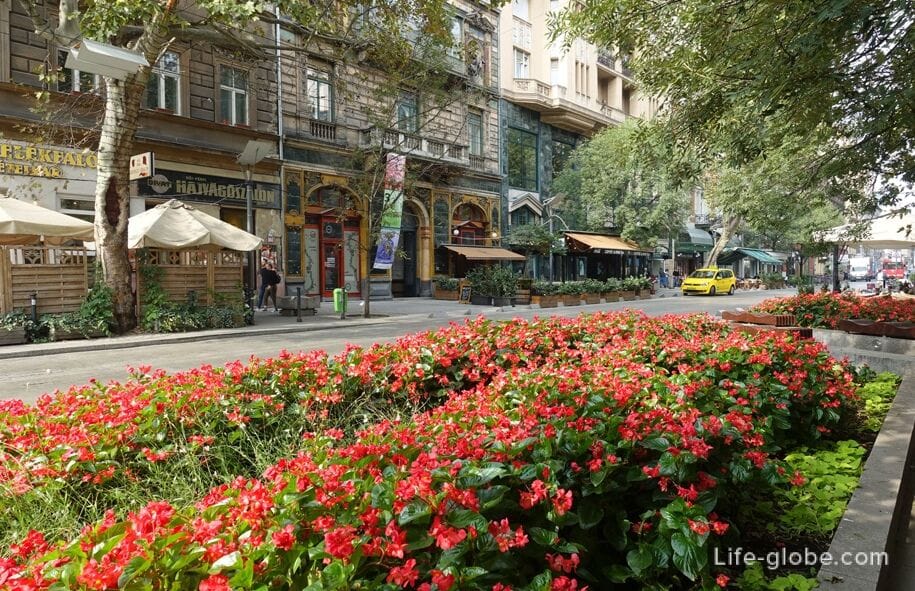
Heroes ' Square
Heroes ' square (Hősök tere) is one of the most important, the largest and most visited areas of Budapest.
Heroes ' square is geographically included in the boundaries of the Park Városliget and is considered its main entrance.
The square was formed for the celebration of the Millennium of Hungary. It was then the monument to the Millennium, which is the main decoration of the square.
Currently, the square hosts concerts, festivals and other events, and on both sides of the center square museums: the Museum of fine arts and Palace of arts, the so-called Mucsarnok. Read more about Heroes ' square...
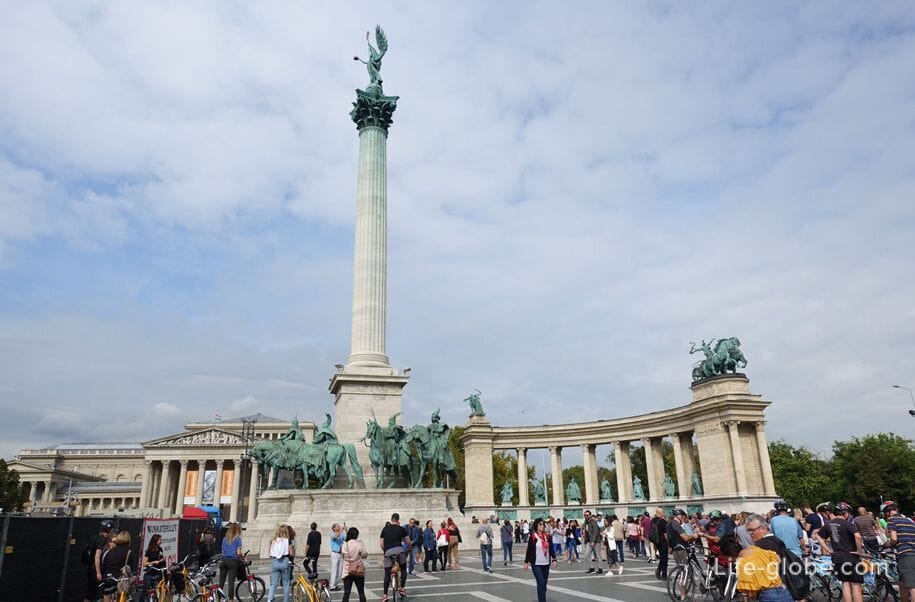
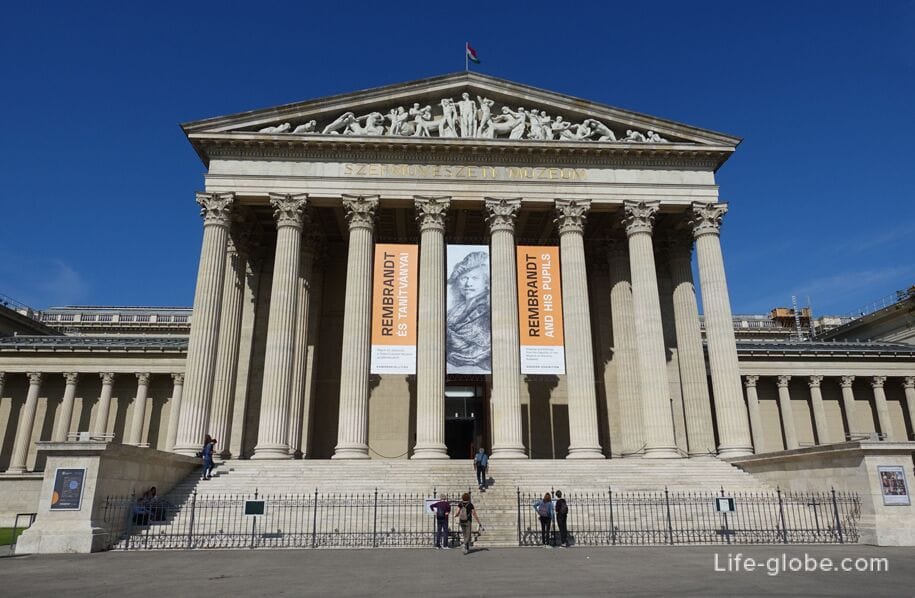
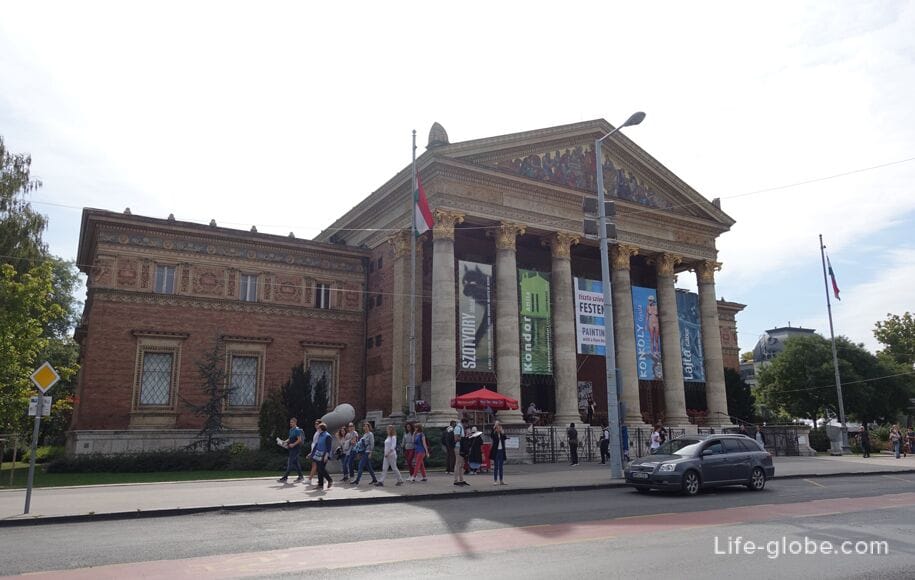
Park Varosliget
Park Városliget-city Park (Varosliget, which means "city Park", "urban grove") is one of the most important, the largest and most visited parks in Budapest.
The Park was created beginning in 1751 and was one of the main places for the celebration of the Millennium of Hungary in 1896.
The Park is notable for:
- an artificial lake, which is spanned by several bridges. Along the lake are equipped with places for rest and walks, and in the lake there are a couple of small fountains. In summer lake can go boating or catamaran, and in winter an outdoor skating rink;
- Vajdahunyad castle (Vajdahunyad vara), which is called the most romantic and one of the most beautiful castles in Budapest. The castle is a complex consisting of a group of buildings and objects of architectural combines some of the best buildings of the historical Hungary into a single eclectic Palace;
- the Budapest zoo and Botanical garden (Fővarosi Allat - es Növenykert), which is the oldest zoo in Hungary and one of the oldest in the world. The zoo has over 1,000 animals and 2,000 plants from around the world;
- széchenyi thermal bath (Szechenyi fürdő / Szechenyi Gyogyfürdő es Uszoda) - thermal (medicinal) baths and pool, the largest thermal baths of Budapest. Read more about the Park Városliget-city Park...
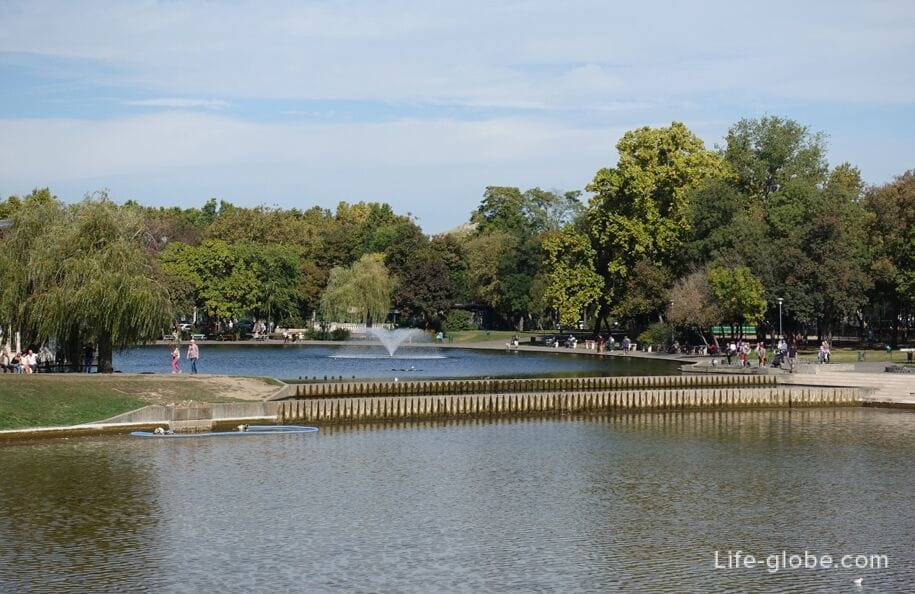
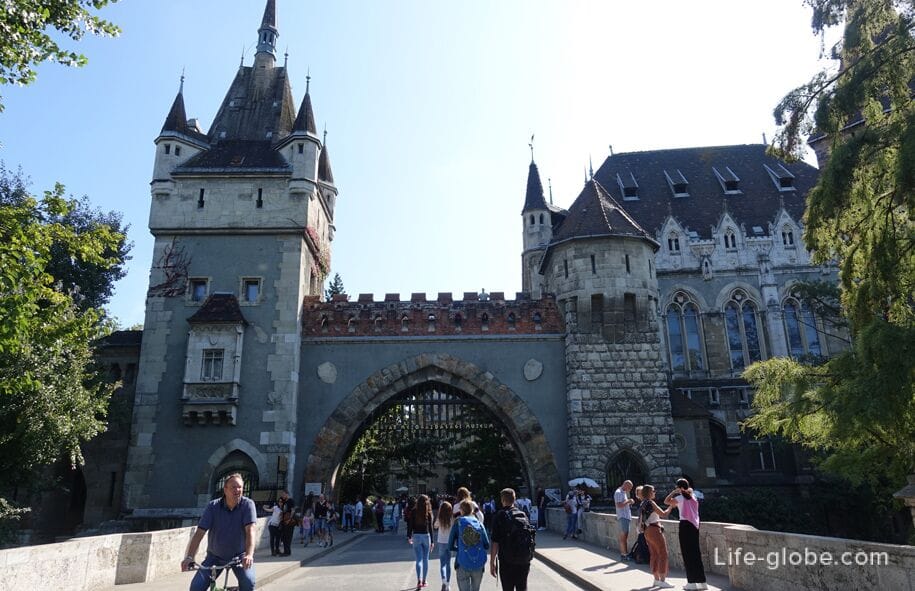
The Jewish quarter and ruin bars
The Jewish quarter in Budapest is located in the inner half of the heart of Erzsébetváros district / Erzsebetvaros (near street karolyi / Karoly krt), which is one of the Central and most populous district of pest.
In the Jewish quarter and the heart of Erzsébetváros district as a whole concentrated a considerable number of attractions, including the Great synagogue or the synagogue on Dohany street (Nagy Zsinagoga / Dohany utcai Zsinagoga), the largest functioning synagogue in Europe and the ruins bars (ruin pubs), iconic attractions of the city.
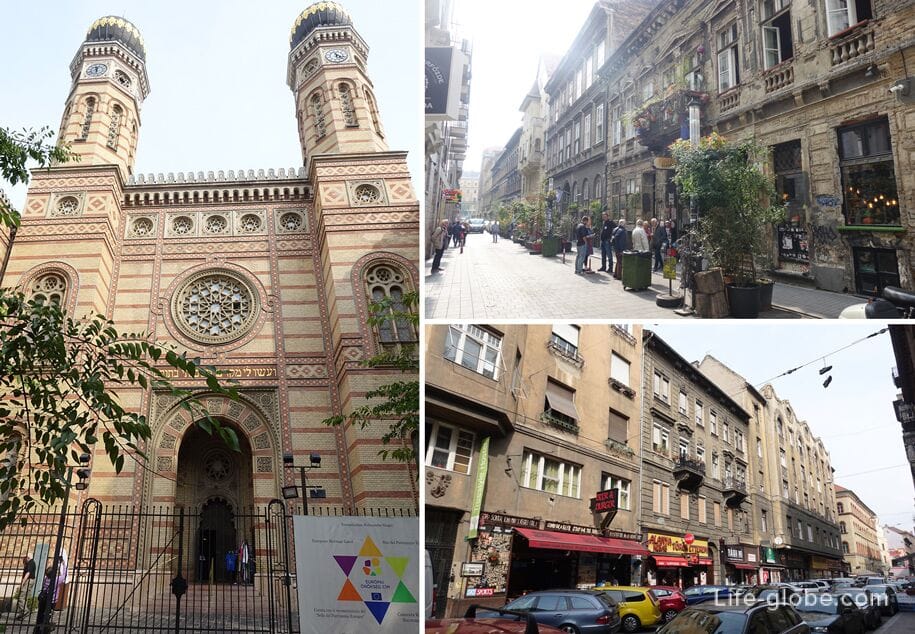
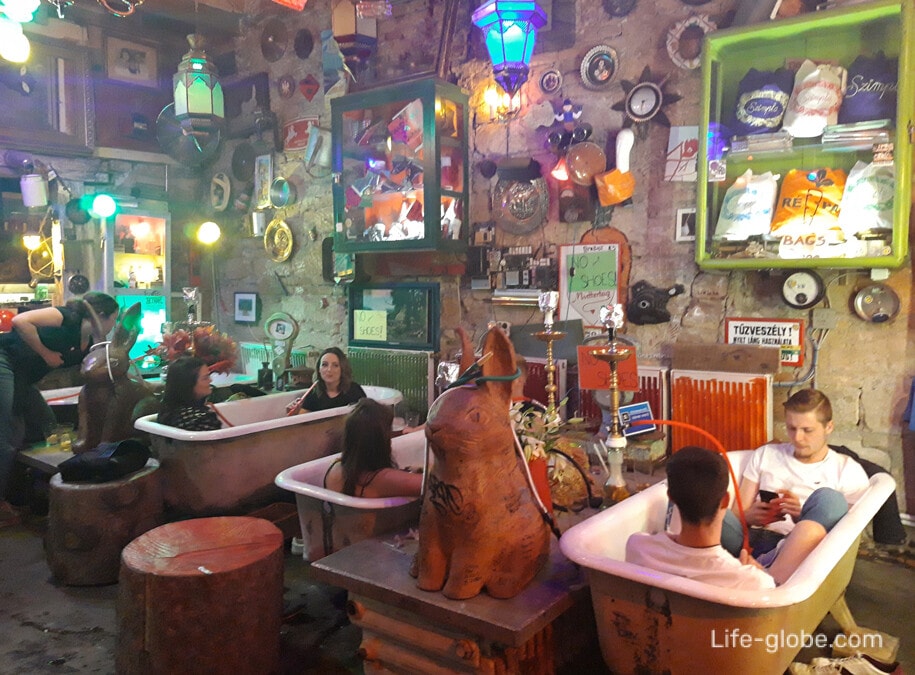
The New York Palace
New York Palace hotel (New York Palace), also known as the new York Palace Budapest - the eclectic building was built between 1892 and 1894 for the Hungarian head office of the new York company of life insurance in which the historical Greek, Latin, Renaissance and Baroque styles are mixed in typically the creative structure of art Nouveau.
Its current highlight, the building was purchased after a complete restoration, opening the door 5 may 2006 as a luxury hotel and famous cafe on the ground floor.
Now on the first floor of the building is the legendary café new York (New York Cafe), and in the building is a 5-star hotel Dedica Anthology, Autograph Collection. Read more about new York Palace...
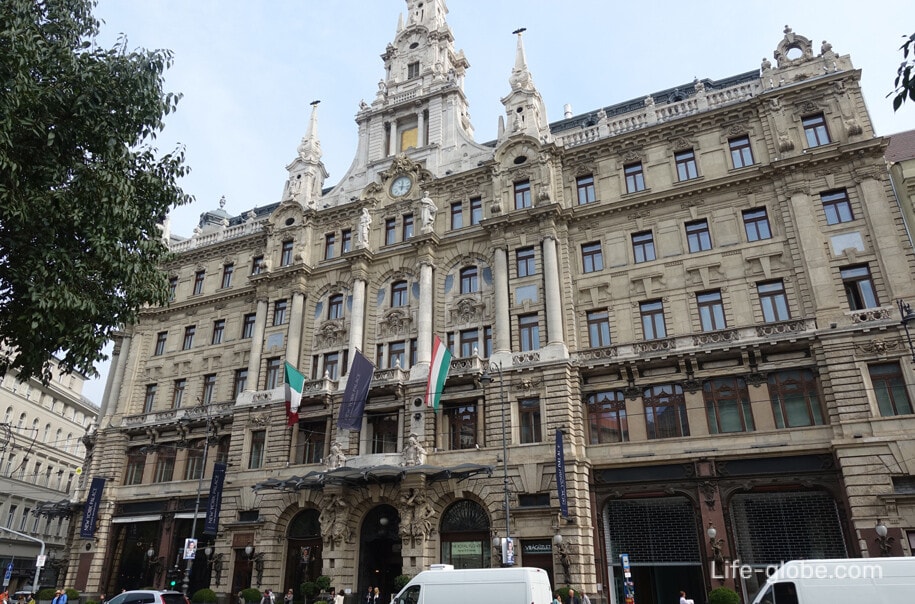
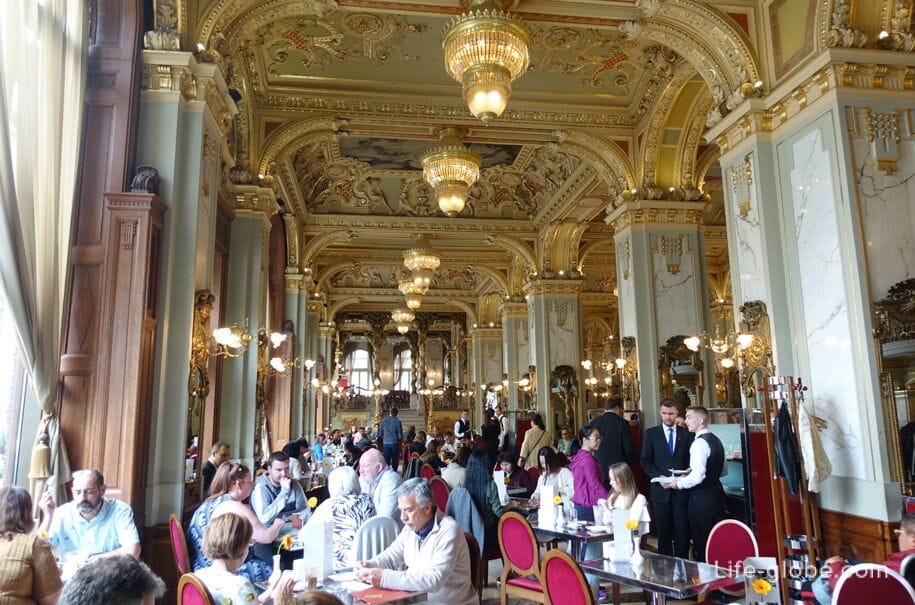
Station Budapest-Nyugati
Train station Budapest-Nyugati ("Western station" / Budapest-Nyugati) is one of the three main railway terminals in Budapest (the other two are Keleti and deli), as performing their primary function, but also the building of the station is a historical site and tourist attraction.
The station was designed by August de Serres and built by Eiffel & Cie, instead of the older station had already not meeting the increased requirements of the city. The new station was opened on 28 October 1877.
This architectural beauty of the 19th century is a complex of stone, steel and glass, which is more like some eccentric Palace than a station.
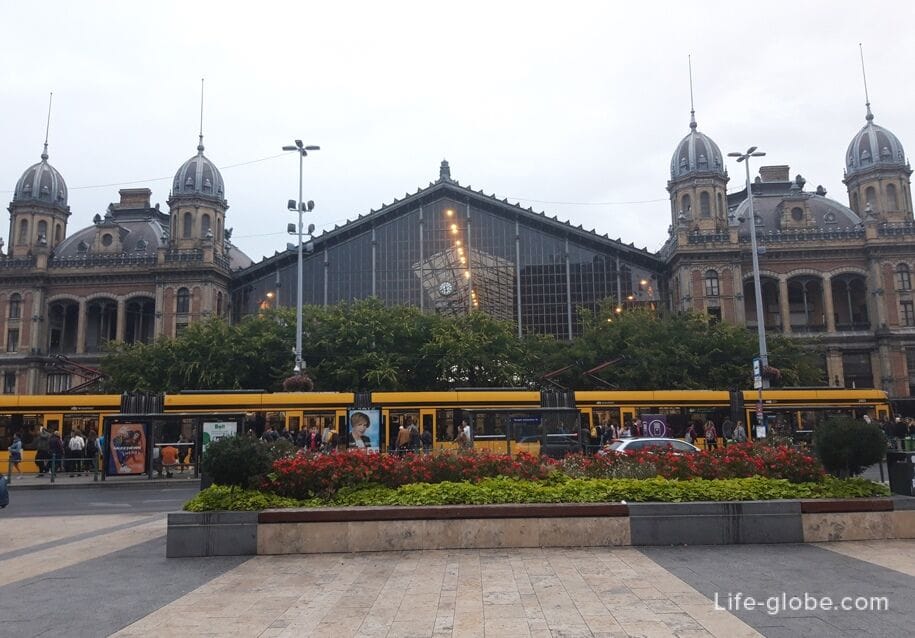
AquaWorld
Waterpark Aquaworld (AquaWorld) is the largest water entertainment area of Hungary, with both indoor (year-round) and outdoor (from may to October) areas, which are: 4-star resort hotel Aquaworld Resort Budapest is a Spa and fitness center, with swimming pool with thermal water, sauna, Hammam and gym.
Address of Park: Ives ut 16 (the Park is located on the Northern outskirts of the pest side).
The website of the Park: aquaworldresort.
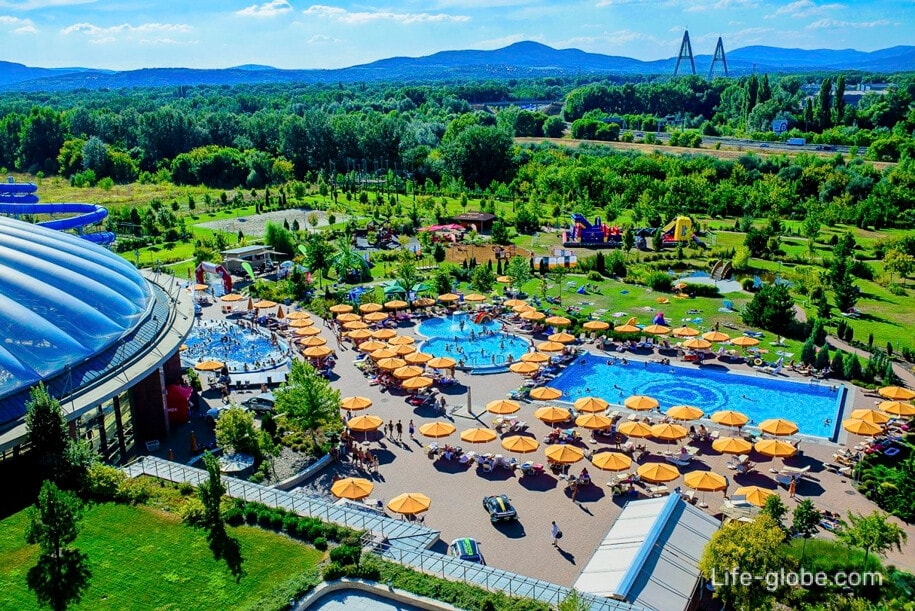
Museums
In addition to the attractions in the truest sense of the word, to the important objects of pest are also numerous museums, among which, and not checked earlier in this article, can be distinguished: the Hungarian ethnographic Museum, the Hungarian national Museum, Museum of applied art, Petofi Museum, postal Museum, Museum of brands, Holocaust memorial center, Hungarian Museum of natural Sciences and the Park of Hungarian railway history.

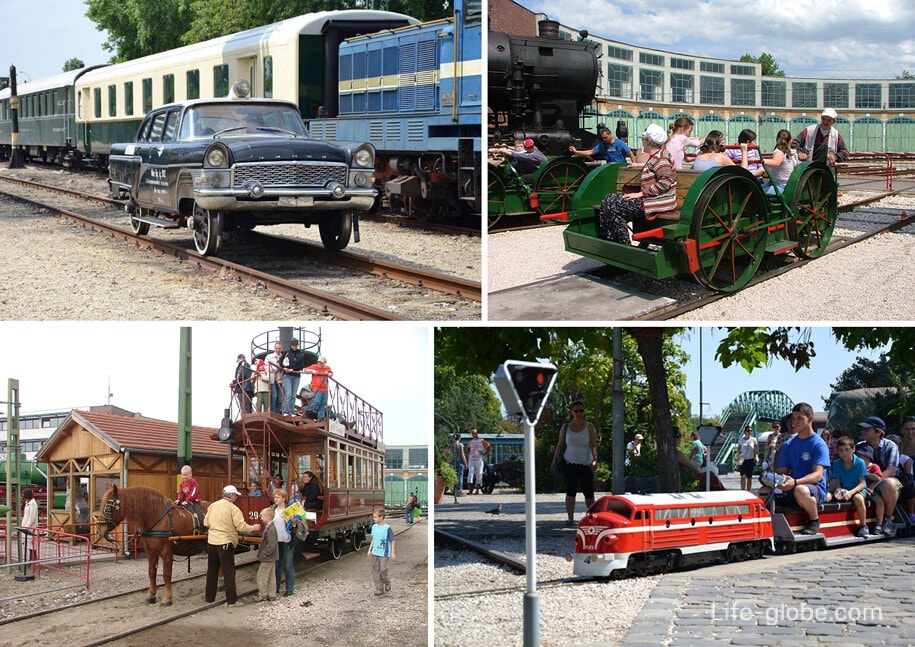
Read more about Pest and sights...
The Sights Of Buda
Aquarium
Tropicarium - Oceanarium (Tropicarium - Oceanarium) consists of several rooms, in which visitors are freshwater fish, including the home fauna, tropical wildlife and a variety of sea creatures, including sharks, alligators, exotic reptiles and amphibians, little monkeys, birds and colorful fish.
Address aquarium: Nagytetenyi ut 37-43.
The website of the Tropicarium - Oceanarium: tropicarium.
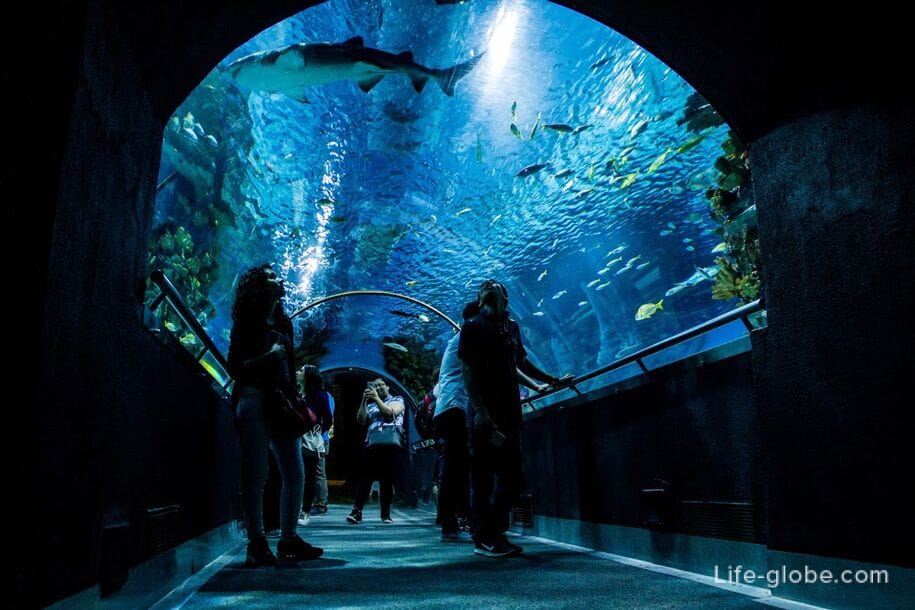
Gellért Hill
The Gellert hill (Gellert-hegy) is a hill (mountain) with views of the Danube river, with a height of 235 metres.
On the gellért hill is notable for attractions such as the statue of Liberty, one of the symbols of Budapest, the citadel, founded in 1854 and is built on an ancient settlement; the rock Church - the Church of our lady of the Rock or of the Pauline monastery, consisting of two parts: the upper is an ancient cave known as the cave of St. Ivan (later the cave of Lourdes) and the lower artificial stone cavity, located inside the mountain, where the temperature in winter and in summer is 21°C.
At the top of the hill and on its slopes are equipped with several viewing platforms and observation points, which gives a beautiful panorama of the Danube and pest. Read more about Gellert hill...
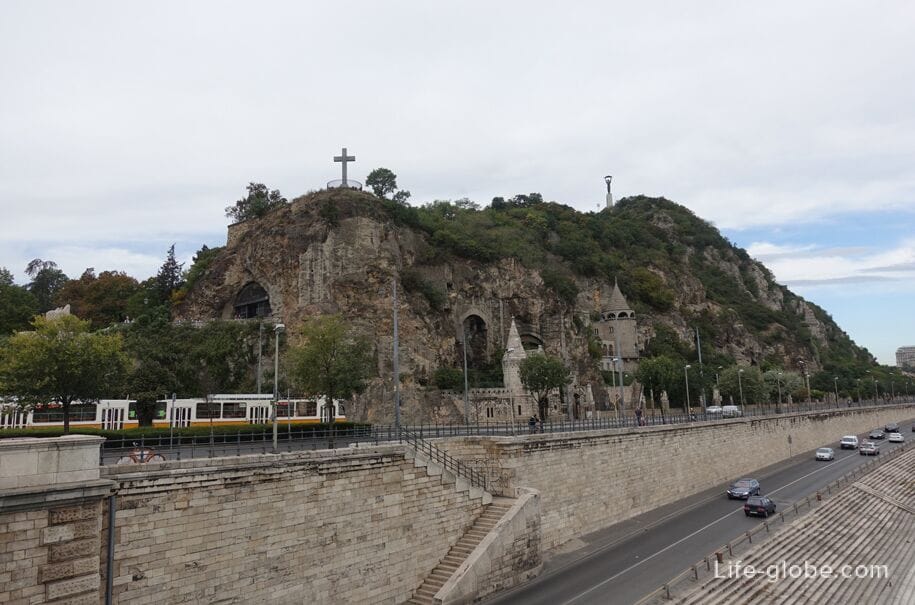
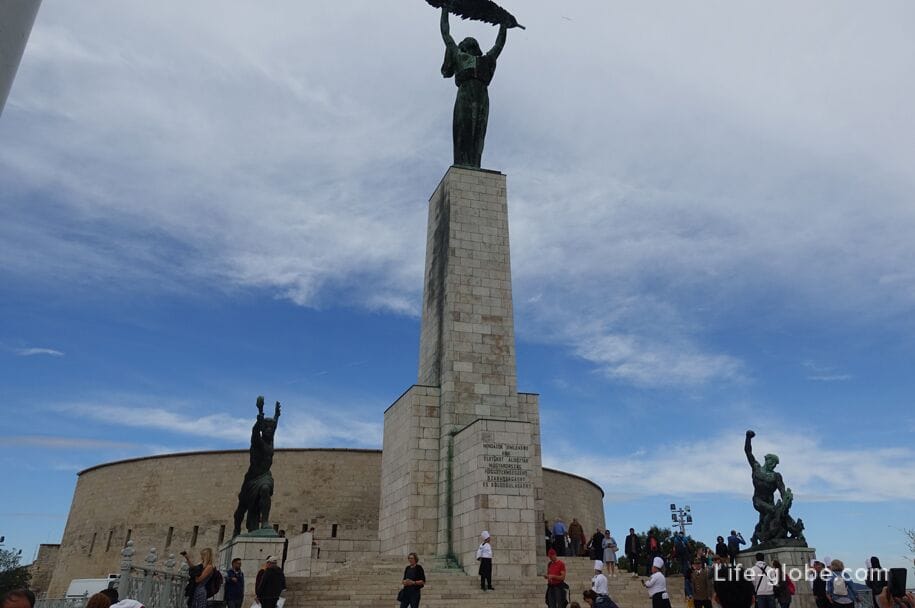
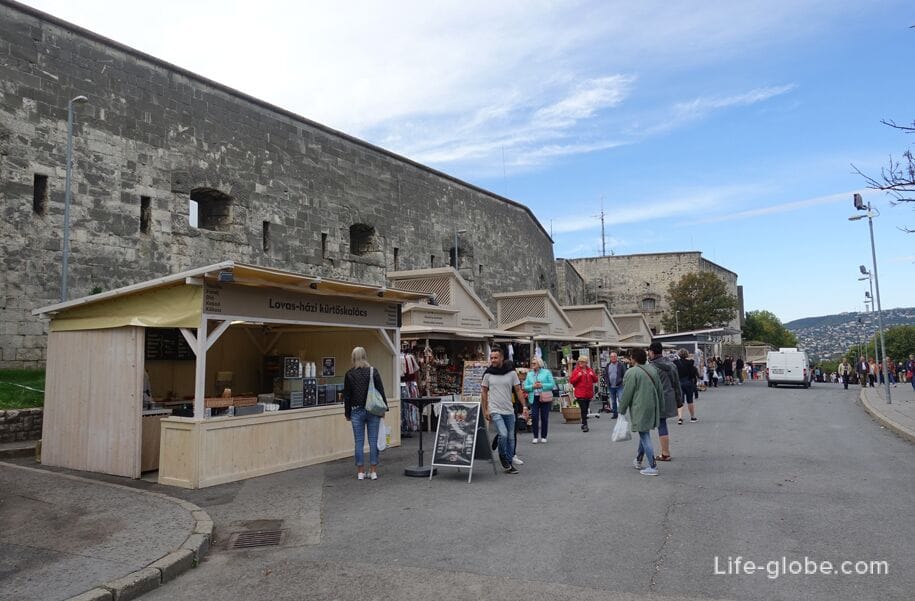
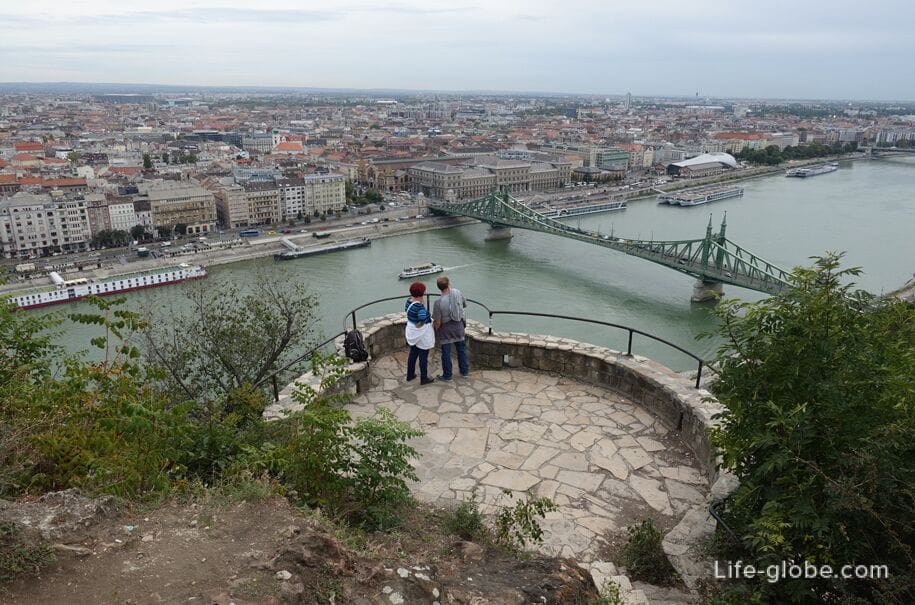
Buda castle (castle hill)
Castle hill or the Buda hills on top of which is one of the best sights of Budapest - Buda castle, which is a kind of city within a city, and a treasure trove of interesting objects, museums and Budapest is a Paradise for lovers of panoramic views.
Buda castle is a historical castle district of Buda, surrounded by medieval, now restored fortified wall, outside of which is the number of objects, originally medieval in origin, narrow streets, along which the monuments of the 17th and 18th century houses and public buildings and squares, museums, monuments, cafes and restaurants.
On-site Buda castle is notable for such objects as: the Royal Palace - the historical castle and Palace complex, once the residence of Hungarian kings; the Fisherman's Bastion, built in neo-Romanesque style between 1895 and 1902 the years, on a site partially destroyed while the ramparts; the Matthias Churchwith a rich historical past and is the most beautiful and one of the most important churches of Budapest; the St. George'sMuseum "Labyrinth", Museum "Hospital in the rock", etc. read More about Buda castle and all its attractions...
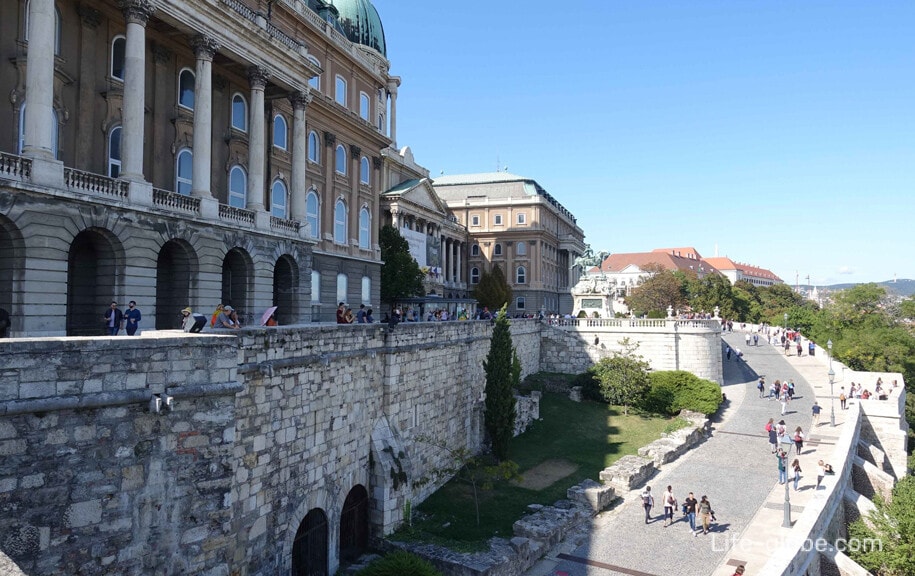
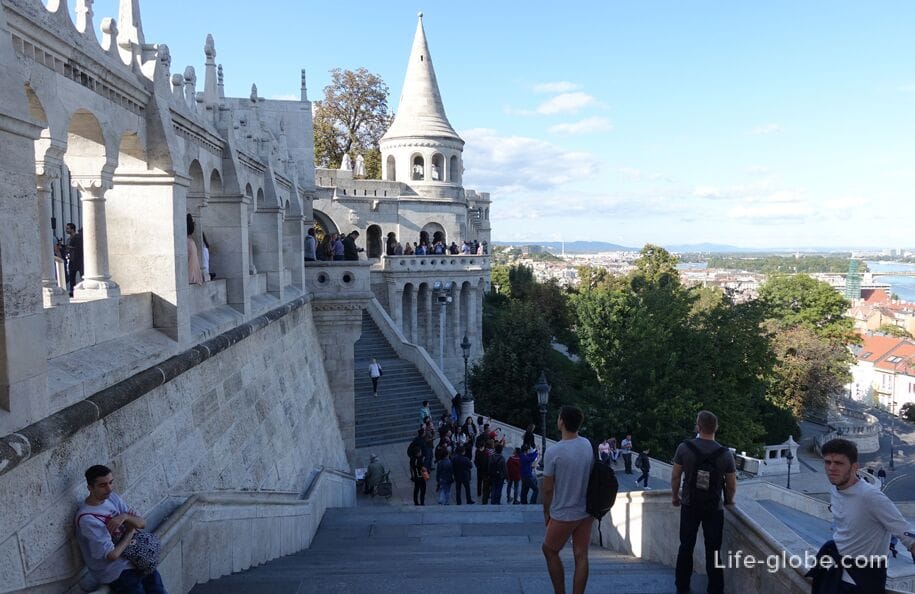
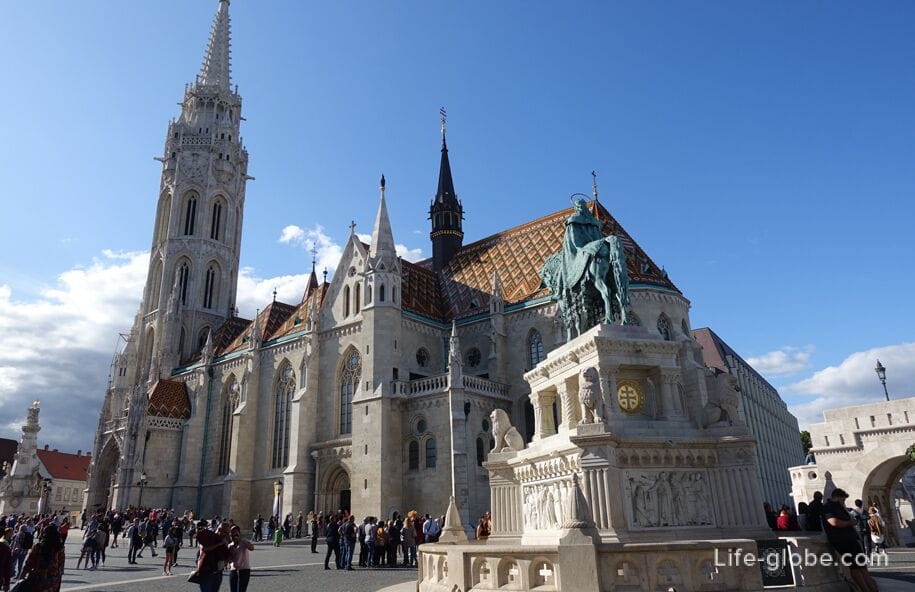
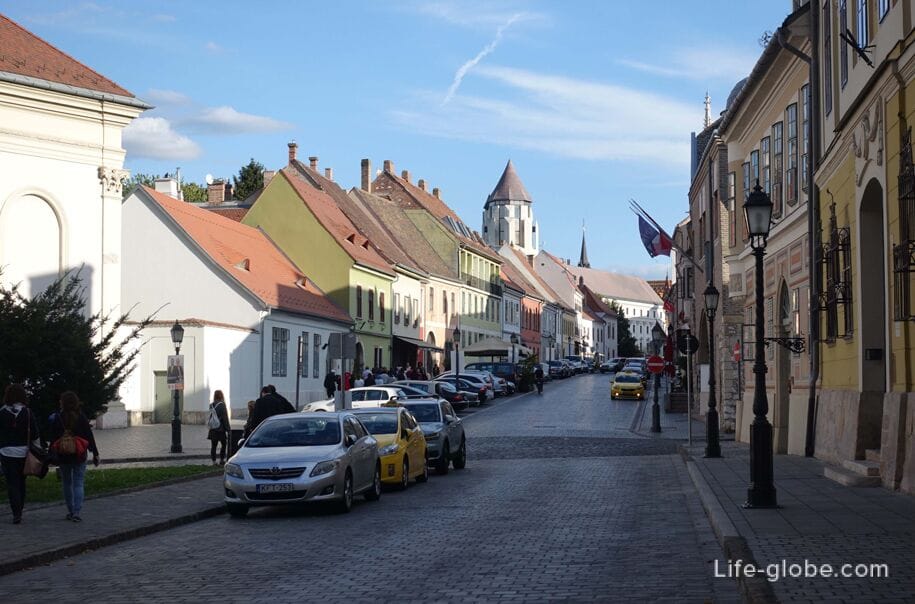
The funicular to the Castle hill
On the funicular (Budavari siklo) of the 19th century, you can climb the Castle hill.
The lower cable car station located at the West side of Chain bridge, near the Zero kilometer tunnel under the Castle hill, on the Adam Clark square (Clark Adam ter).
The upper cable car station is located in St. George's square on Castle hill.
The website of the cable car: bkv.
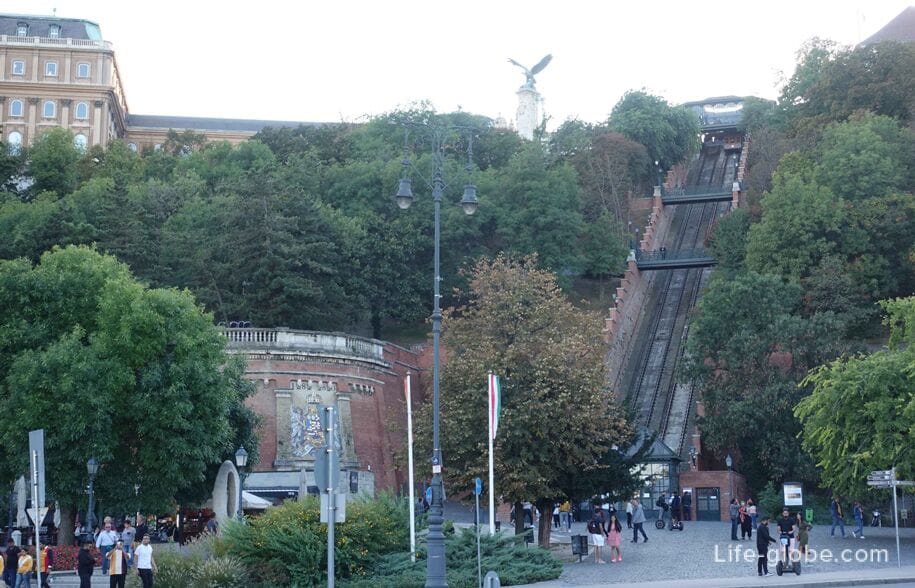
Mountain Janos
A mountain or a hill Janos / Janos (Janos-hegy) is the highest point and one of the best lookouts in Budapest.
On the mountain is an observation tower with a height of 527 meters, known as the observation tower or the Elizabeth lookout tower Elizabeth (Erzsebet-kilato) and giving a beautiful panoramic view. Admission is free (complimentary).
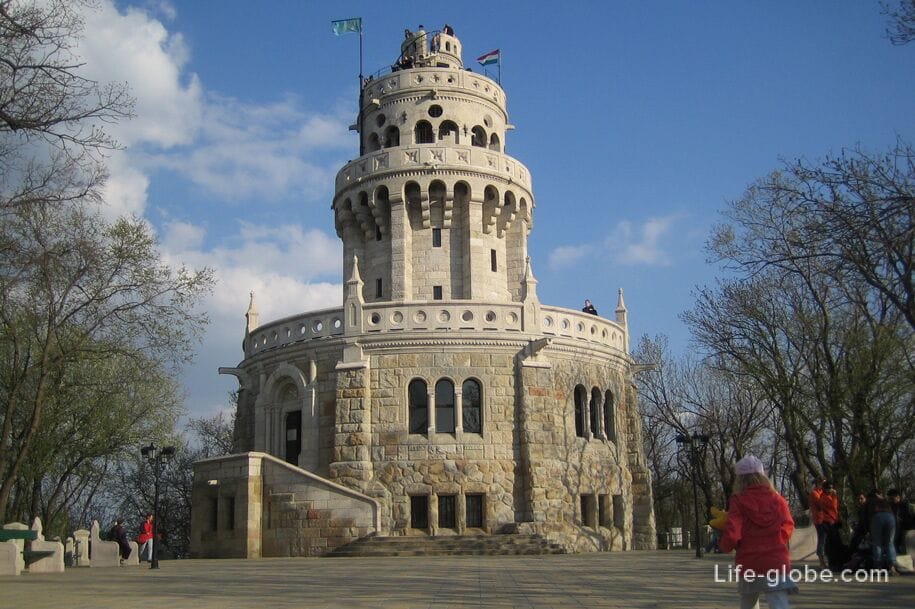
Alternatively, climb the mountain Janos, you can use the cable car - gondola-lift (Zugligeti Libegő) or a ride on the children's railway, one of the stations which is located near the tower Elizabeth.
In the station building Huvosvolgy (Hűvösvölgy) of the children's railway Museum is the Children's railway (Gyermekvasutas Muzeum) which stores the material and visual memories from the start of construction of the children's railway.
Cable railway and children's railway is not only one of the modes of transport in Budapest, but are also independent sites.

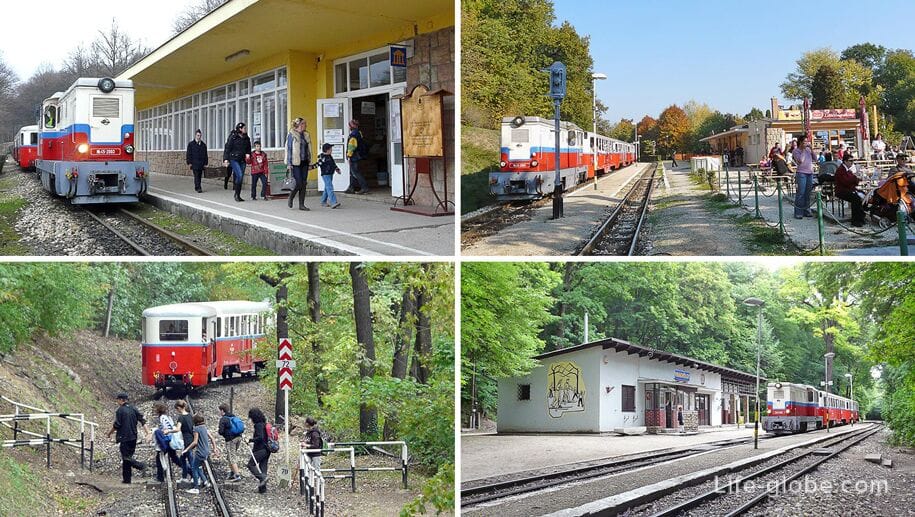
The Mausoleum Of Gul Baba's Tomb
The mausoleum of Gul Baba's Tomb (Gül Baba türbeje) is a sacred place of pilgrimage and also tourist attraction is a complex that includes the terraces, a fountain, flower beds and the tomb of Gul Baba. Admission is free (complimentary).
Mausoleum address: Mecset u. 14. Read more about the mausoleum of Gul Baba's Tomb...


Caves
On the Buda side there are two caves:
- stalactite cave PAL-veldi (Pal-völgyi-barlang) is the longest cave of Hungary, famous for its stalactites, which was opened in 1919. The coordinates of the cave: 47°31'58.2"N 19°00'58.1"E (address: Szepvölgyi ut 162). The cave site: dunaipoly;
- mountain cave in Her (Szemlő-hegyi-barlang), popular among families with children and tourists. In the cave you can also watch movies in the cinema and to visit the interactive exhibition. Address caves: Pusztaszeri ut 35. The cave site: dunaipoly.
The air temperature in the cave is 11°C - 12°C throughout the year, so in the summer you should dress a little warmer and be sure to come in comfortable shoes.
In both caves you can buy separate tickets or a combined ticket giving admission to two caves.

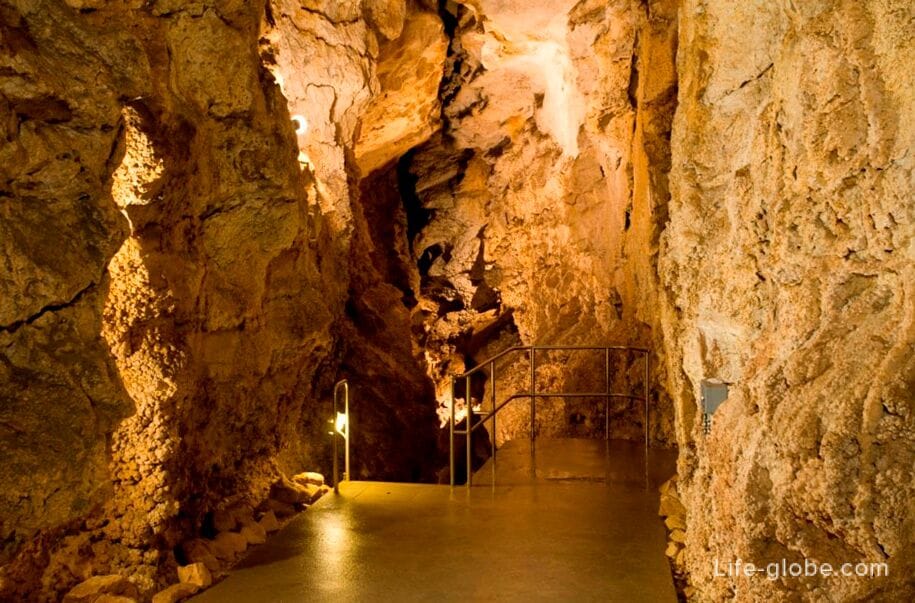
Zichy Palace
Palace of Zichy (Zichy-kastely) - two-storey building in the Baroque style, originally built on the ruins of a Church count miklós Zichy in the years 1746-1757.
Outbuildings of the Palace complex was completed a little later, between 1754 and 1757 years. Staircase and chapel of the main building was decorated with frescoes, and their furnishings contrasted with the aristocratic atmosphere of the castles of those times.
After the death of miklós Zichy his widow donated the property to the crown in 1766, in exchange for an annuity.
Currently, the buildings of the Palace complex are located: Museum of óbuda, memorial Museum of Lajos Kassák, the Museum of Victor Vasarely, also known as the Museum of fine arts Vasarely and concert hall "the Garden Kobuchi", located in the courtyard.
The address of the Zichy Palace and museums: Fő ter 1.

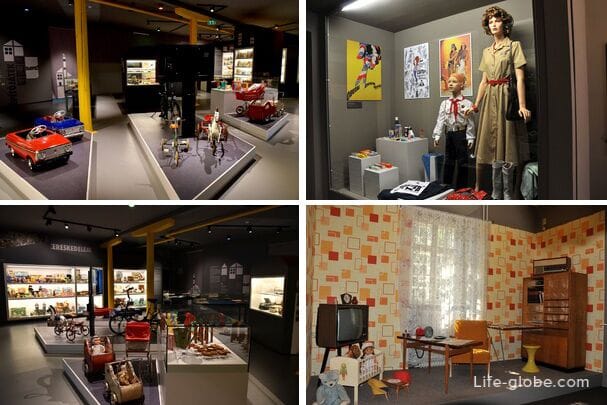
Hungarian Museum of trade and tourism
The Museum also known as Museum of Commerce and hospitality (Magyar Kereskedelmi es Vendeglatoipari Muzeum) and its collections tell the history of the trade (domestic wholesale and retail, international, financial, etc), hospitality industry (hotel business), as well as the tourism industry, presented as an interactive exhibition.
The Museum has both permanent and changing (temporary) exhibitions.
Address: Korona ter 1.
Museum website: mkvm.
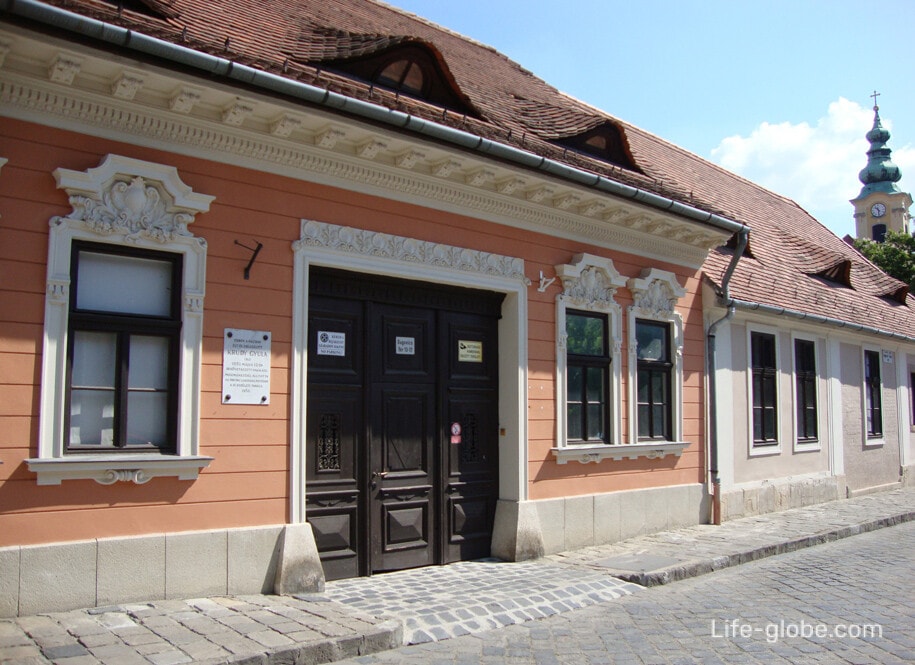
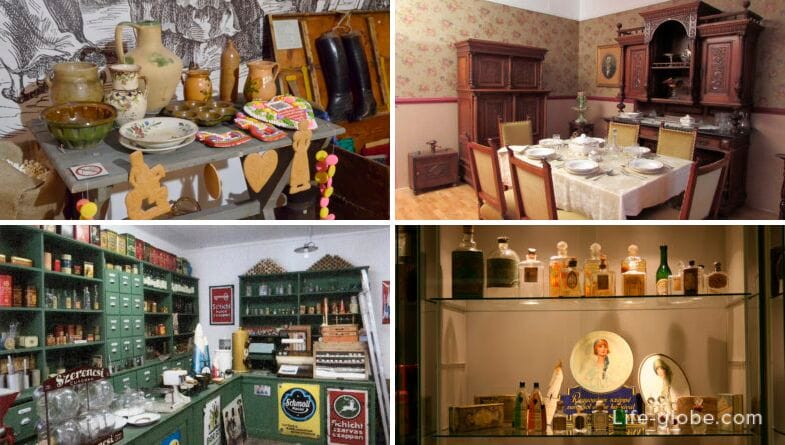
Florian area
Before the square was the entrance to the Roman settlement Aquincum.
St. Florian's square (Florian ter) is one of the main squares of óbuda (Buda) where is the business and shopping centre Florian (Florian Business Center), as well as a Park area and is concentrated several attractions:
- votive altar (Fogadalmi oltar), which is a sculptural group and initially built parts between 1758 and 1763 over the years, as a symbol of protection from earthquakes, floods, fires, and plague;
the ruins of the Roman baths (Roman Bath Museum) - part of the ruins, once part of the ancient city of Aquincum. The remains located under the bridge;
- reformed Church óbuda (Obudai reformatus templom), known as the old Calvinist prayer house in Budapest.
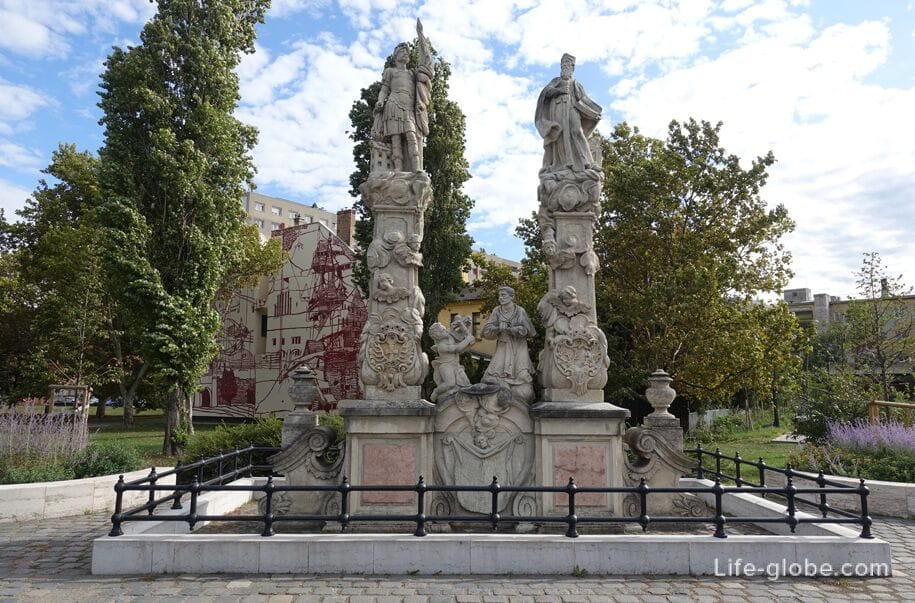

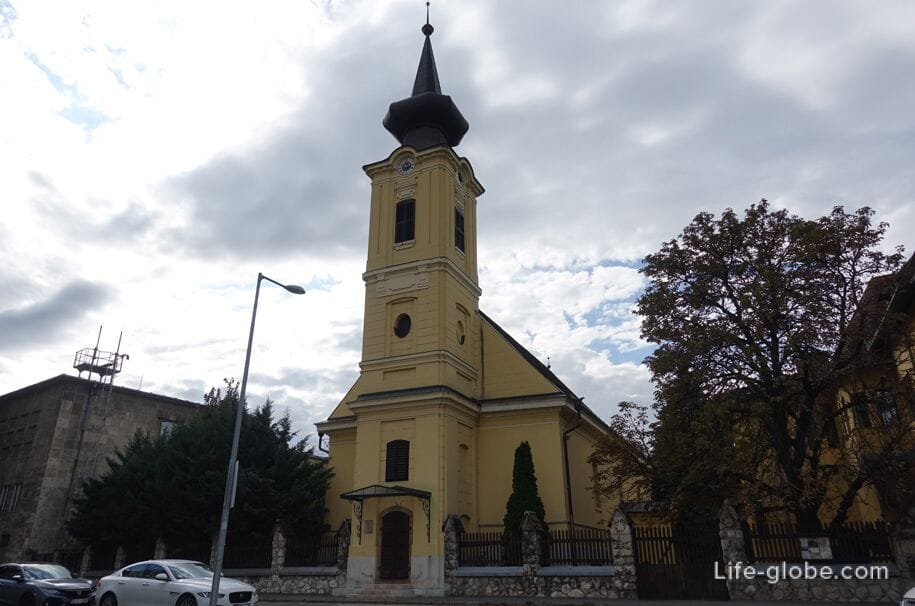
Museum Kiscelli
Kiscelli Museum (Kiscelli Muzeum) - the historical Museum, located in the eponymous castle in the Baroque style, built in the 18th century for the monastery of the trinitarios.
During the history some time in the walls Kiscelli housed a barracks and then a hospital. Currently a branch of the Budapest history Museum.
The exposition of the Museum, consisting of nearly 3,800 items dedicated to modern and contemporary history of Budapest (18-21 centuries), as well as the lifestyle and culture of the residents of the area.
Address: Kiscelli u. 108.
Museum website: kiscellimuzeum.
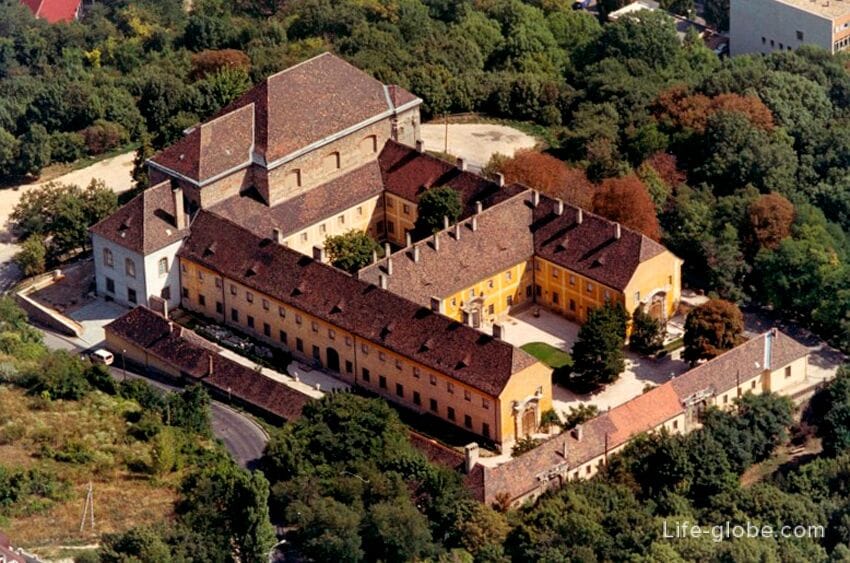
The Aquincum Museum
Archaeological the Aquincum Museum (Aquincumi Muzeum) is in ruins (archaeological sites) of the ancient Roman city of Aquincum., which presents jewelry, glassware, metal tools and wall paintings relating to the life of the ancient Romans, once living in Aquincum.
In the outdoor area of the Museum are the remains of the city, including courtyards, baths, markets, shrines, large columns, sculptures and a stone sarcophagus.
Main the Aquincum Museum is located at: Szentendrei ut 135.
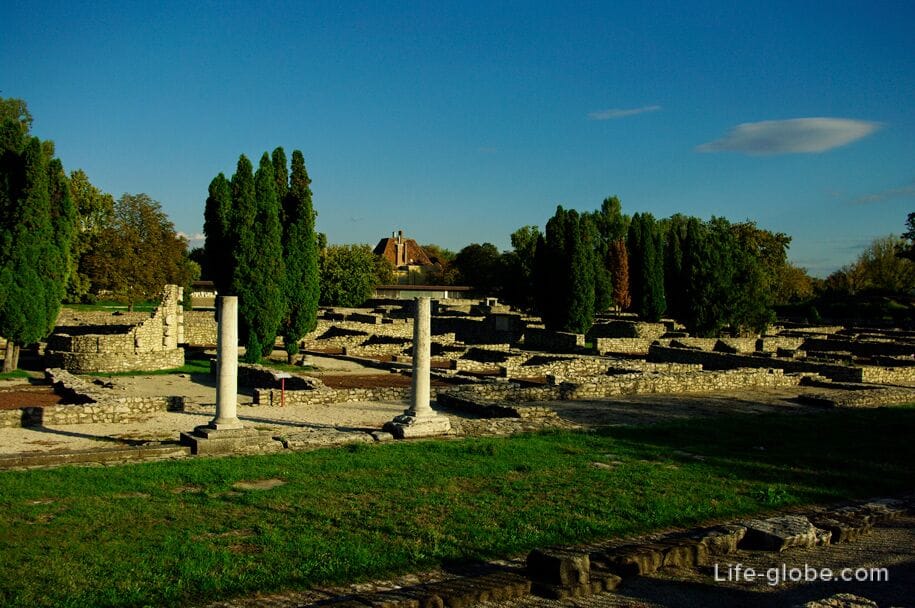
In addition to the main part of the Museum Aquincum includes and other ancient sites located in separate areas of óbuda, which include the Roman baths, Villa of Hercules, the ruins of the civil amphitheatre and the ruins of Aquincum larger military amphitheatre in Aquincum.
The website of the Museum of Aquincum: aquincum.


The Island Of Obuda
The island of Obuda, also known as Haidari and island dockyard (Obudai-sziget, Hajogyari-sziget) is a large island in the waters of the Danube.
The island is known, first of all, thanks to the availability of large recreational areas, Playground with slides and high as the venue for the annual music festival "Sziget" (Sziget).
"Sziget" - the annual festival of music, culture and art, which lasts for 7 days, programs operate 24 hours a day, has been held since 1993 and is the fifth largest festival in the world and one of the largest music events in Europe. During the festival you can stay in campsites, right on the island. The website of the festival: szigetfestival.
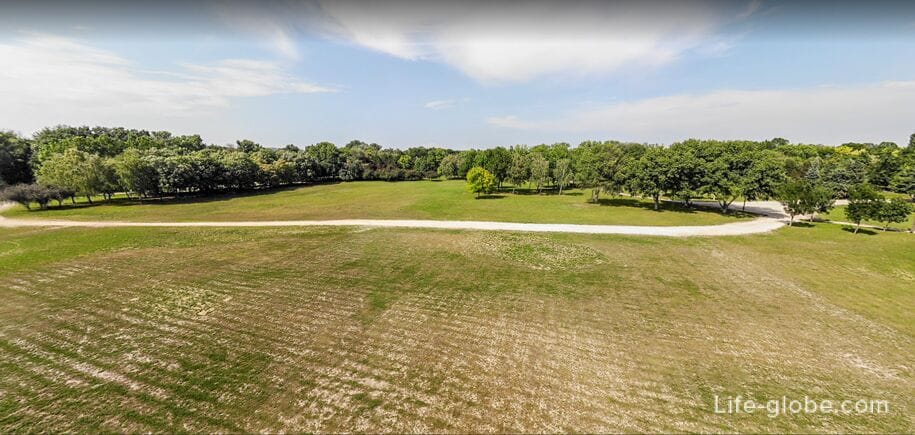

Park Museum memento
Park Museum memento (memorial Park, Memento Park) is located on the southern outskirts of Buda, outside of the tourist centre of Budapest.
The Park was established as a Museum under the open sky, project AKOS of Aleida and opened in 1993.
In the Park of sculptures (monuments) of the Communist era between 1945 and 1989, including allegorical monuments of "Hungarian-Soviet friendship" and "liberation", as well as statues of famous figures of the labor movement and the soldiers of the red army. There are statues of Lenin, Marx and Engels, and several Hungarian Communist leaders.
Address Park Museum: 22nd district (southern Buda), Balatoni ut Szabadkai ut.
Website Park Museum: mementopark. Read more about Bude and the beach.
